
by Paul Yan | Jun 17, 2017 | Grryo Picwant, Paul Yan, Stories, StreetPhotography, You Are Grryo
Building up a sense of connection with Beijing through the iPhone lens – by Paul Yan
It is one thing to live and work in a city of another land other than the motherland you were born in; it is another to get used to and be in peace with it even though you have lived there for ten years. Here’s my story of how I gradually developed a sense of connection with the city of Beijing through the act of photography, which is non other than mobile photography.

I was born and raised in Taiwan, which has been geographically and culturally part of China since antiquity, but not idiologically, since 1949. Although the official languages of both lands are practically the same, the written forms are very different. People of Taiwan write in the traditional Chinese characters, while citizens of China write in the simplified form that was developed and finalized in the 1950s. The difference between the two is so great that it’s common that a person who is accustomed to one form doesn’t recognize the other. The differentiation can be found in many aspects of life including ethics, patterns of behavior, aesthetics and values.
I had been working in the music production industry of Taiwan since 1990 and was fortunate enough to have worked briefly in Beijing in the mid-1990s, participating in producing a few musical projects that are now lauded by the Chinese media as classics of the Chinese rock and pop music. However, I didn’t feel the need to move to China to continue my music production career as I had enough work to do in Taiwan. It was in 2005, after being encouraged and invited by my friends, that I moved to Beijing to continue my music production career. Everything had been going very well with work, I’d made many new friends and I had been supported by old and new customers. However, it was pretty hard for me to really establish a comfortable rapport with the city.
Everything changed after I started to take photographs, mainly in the street of Beijing, with my mobile phone in 2015. On my days off from long hours of studio work, I frequently went out and roamed the streets of the city for over 6 hours at a time to shoot to my heart’s delight. That became my only mode of exercise to keep me fit. I found myself opening up and chatting a lot with strangers in the street while taking photographs with them in the frames as the human elements. Sometimes environmental portraits are made after brief conversations with my human subjects. Being mindful of the happenings in the streets and parks, feeling the heartbeat of the city, I began to build up a real sense of connection and belonging through the act of mobile photography.
It’s a splendid myth that the act of mobile photography has brought me closer to the soul of the city of Beijing after living in it for ten years.

[Smoke on the Cluster]
You can find roadside Barbecue stalls everywhere in Beijing, and all over the country, when the climate is warm enough. Roadside BBQ is a major pastime for the people in the evening; you can smell the smoke and scent from afar. Upon seeing this stall, I asked the chef if I could photograph him working – he was totally cool in front of the lens. My right hand almost got burned while taking this one as I was holding my phone very close to the grill while he was sprinkling spice over the clusters of mutton.

[The Day After]
After kissing my mother goodbye at Beijing airport, I decided to stick around outside the airport building to take advantage of the overpass under which people would walk by. I pre-focused on the floor a few meters in front of me, held my phone right on the floor to get the composition and then waited, squatting… A couple of minutes later, this lady walked by and I released the shutter with the phone’s ear-buds cable as she just got into the frame walking in full stride. Thanks to her curiosity about what I was doing, she glanced my way over her shoulder while the photo was shot.

[A Stroll with Siddhāttha]
Early winter morning stroll in the woods, I felt peace and imagined walking behind Mr. Siddhāttha Gōtama, aka the Buddha (the Awakened One) – listening to him teaching me how I could practice to be free from all attachments to ego and everything. This was shot with the Slow Shutter Cam app in Motion Blur mode, focus-locked on the nearest tree, scanning the phone vertically to achieve that blur.

[Progressive, in Raving Lights]
A photographic tribute to all the classic progressive rock bands like Yes, King Crimson, Genesis, Rush and Marillion, etc.. This was shot on an overpass with the Procamera app set to 1/2 second at ISO 32. I focused on the floor and wiggled my phone vigorously when these people walked into the frame to take the image. The light streaks were headlights and tail lights of passing cars.

[Tread the Path]
I was experimenting here, taking low-angle shots with the Manfrotto Wide-Angle add-on lens. After locking the focus on the ground in front of me. I set the shutter speed and ISO in the ProCamera app in my iPhone 6 Plus, then squatted on the edge of the pavement by the boulevard leading to Tian-An-Men Square in Beijing and waited for my prey. I had the top edge of my phone right on the pavement and tilted the lens up towards the low afternoon sun with the intention of including only someone’s legs in the frame. I saw a man coming by while another was in the distance. The shutter was fired when the one near me was about to walk out of the frame and the one in the distance was right in the triangle formed by the former’s stride.

[Kalyāna-Mitra – Lesson from a Tree]
This tree, among others, has always been erect on the bank across the small river close to where I live, and can be see from my balcony every day. It changes from being leafy to bare and the cycle goes on through all the seasons. It has become one of my friends in nature and has been a living reminder to me of the lesson of impermanence and equanimity in all conditions. It’s my “Bodhi Tree” if you like. One day, I decided to shoot a photo of us two together…

[Into the Unknown]
I was strolling in the eastern downtown area of Beijing one afternoon when I came upon this entrance/exit of a subway station. An escalator connected the station to the ground level where a translucent blue canopy had been installed. Refracted blue light fell on the walls and the ceiling inside the tunnel, rendering the people on the escalator as silhouettes against a blue background, when one looked up from below. The words “twilight zone” came to mind when the scene met the eyes.

[Crossfire in the Jungle]
This image was taken at a crossroads in Beijing, where cars honk their horns relentlessly at everything in front of them, right at the instant when the traffic lights go green. Life in the urban jungle isn’t so easy for a lady, especially when you’re threatened by carnivores on wheels that don’t know pedestrians are to be respected.

[Ascent to Luminescence]
Me and my wife were visiting a friend who was a professor at medical school. This stairwell was just outside his office. I thought the profile of the stairwell wall, when looked down from the upper level, was geometrically interesting for a photograph… but not that interesting without a person in the frame. So I had my wife go down to the level below and asked her to go up with her hand on the rail. I took the photograph while she reached the spot that I’d pre-visualized for the composition. Thanks to my lovely wife for her co-operation!

[Hey babe, take a walk on the wild side!]
Shot on a rainy night outside the entrance of a supermarket near home. I saw the wet pavement reflecting the red light emitted by the neon sign above the storefront and thought it would make good foreground for an image. A girl walked into the frame pretty soon. My lips pressed one of the volume buttons of the phone’s earphone cable to fire the shot, right when her legs were in wide stride in front of the bright store light.

[Up is the way!]
I was wandering around a bus station one afternoon when I hit this spot under an overpass where a triangle was formed by the columns and the edge of the overpass. Without hesitation, I focused on the stairway, carefully composing the scene so that the top tip of the triangle touched the top edge of the frame, and waited for my prey to get on the stairway.

[Mama told me not to come!]
It was in a lovely August afternoon last year when this photograph was taken. A few kids were playing and running around in an open area of a park, and the pinky dress and shoes of this jolly little girl attracted my eyes immediately. I pre-focused on the ground about 1.5 meters in front of me, squatted and waited for her to run past me, and she did!
Viva innocence and purity!

[Universal Fountain of Love]
At the fountain in the frontal plaza of the Hyatt Hotel in Beijing, which was pretty close to the Royal Palace/Forbidden City/Tian-An-Men Square. The fountain was lit from inside the rim around which people like to take selfies or pictures of their family and friends. The plaza is usually swarming with people in the evening so it can be hard to take a clean photograph of the fountain.
The girl in the frame had just finished posing for her friend’s smartphone on the rim of the fountain and was bending down to pick up her purse, getting ready to leave when I took this photo.

[Nothing Lasts Forever]
The city of Beijing had a pretty heavy snowfall on November 22nd 2015. I was delighted because I had been hoping for the advent of snow so I could go out and have some fun shooting in it. My white trip started at about three in the afternoon. I had already been rewarded with a couple of worthy frames when patrolling in the wafting snow before this image was taken. The snow on the branches of this tree by the river, along with the snow on the surrounding ground, were tinted electric pink by the row of red neon signs on the other side of the road. I put my iPhone on a tripod and set it up about 3 meters from the tree and half a meter above ground. I angled it up approximately 30 degrees so I could have the tree, with its hanging leaves, as a natural frame that partially veiled the residential buildings across the steaming river.
The sun had completely set when I began working on this image. To have the ISO value as low as possible to avoid noise and grain, I set the shutter speed of my ProCamera app to the slowest it could go: 1/2 second, and I had to set the ISO to no lower than 160 before under-exposure was inevitable. I left the auto white balance on as the colour temperature decided by the app was quite spot-on on this occasion. The app’s self-timer was set to 25 seconds, giving me time to get into position in the frame, playing the human element.
This image, as a self-portrait, conveys my state of mind at the moment:
Steam on the water, snow on the ground, leaves on a tree, smoke from a cigarette, man in an overcoat – all conditioned things are but fleeting existence. Nothing lasts forever. So don’t be attached whatsoever.
May all be in peace and joy!
Paul Yan is a talented photographer and Picker. He is the first author to be published on Grryo following the announcement of our partnership with Picwant.
See more of Paul on : Instagram | Interview video on YouTube

by Alexandre Kurek | Jun 9, 2017 | Alexandre Kurek, Black and White, Stories, You Are Grryo
It was almost as if the rain had washed away any traces of an identity we – the tourists, travelers, photographers, writers – gave Marrakech over the years, and had now revealed a much more accurate truth of a city usually depicted as way more colorful and exciting than it really is. But not that day. Gone were the beautiful and rich colors – and smells of various spices and freshly cooked foods usually experienced in Marrakech. Instead, I was witness to a grey and flavorless, almost melancholic, truth of the so-called red city – unfolding a deeper drama of mundane life right in front of me and thus catching my deepest interest.

Wandering through almost deserted streets, I was able to catch a glimpse of a reality totally concealed to most of the foreign visiting public, a reality filled with boredom and uselessness – there was no need for artificial excitement for there were simply no tourists present who had to be artificially kept excited. The only people around, despite a few stray visitors like myself, were Moroccans going their way or hiding from rain underneath a canopy, in shops or by a door, and alleyways, minding their own business. I met Nick at Café de France later that day. After being separated from each other for a couple of hours – we decided to part ways for some time in order to be able to focus on taking photographs without distracting one another – we sat down to drink a coffee and have a talk on the roofed balcony only minutes before a heavy rainstorm hit us. As the people seated in the front row of the balcony started fleeing from the fierce rain, Nick and I – seated in the much safer back row – were rewarded with an excellent view of the usually heavily populated Jemaa El Fna square.

We watched in awe as the storm got heavier, several lightning strikes occurred and people all over the square ran around seeking shelter. The sky cleared up and the storm ended just as fast as it had begun, and we continued our journey through Marrakech together. Drawn to a crowd of people standing in front of a huge but unobtrusive building, right next to the Maison de la Photographie – which we just visited – we decided to stick around and observe the scene for a little while. It quickly turned out that this building was in fact an elementary school about to end classes, and soon the people in front of it were greeted by dozens of children rushing out of the school screaming, chanting and laughing – young lives invigorating the lifeless streets again.

Quickly backing off to an opposite wall while joyfully watching the kids being hugged by their benevolent mothers and fathers, I looked around and noticed five to six men approaching really fast, carrying a gurney loaded with something unidentifiable, covered up only by a white sheet. Seemingly unnoticed by the parents – there was just too much commotion going on – the men slowed down while shouting and simultaneously pushing their way through the crowd. Catching a glimpse of what was hidden beneath the sheet, it was then I realized that they had loaded the dead body of a young boy onto a bier, carrying him as fast as they could through the narrow streets of Marrakech to whatever their final destination was. A man who stood right next to me – and one of the very few having noticed the load too – told me in french that he had heard about the recent tragedy of a young boy being struck by a speeding car, not far away from the very school he and other parents were standing in front of, eagerly waiting to pick up their children. “Il est mort,“ he said with a toned down voice, and sounded certain about that young boy’s fate. “They are rushing him to a nearby hospital, but it’s already too late. He’s dead. It happens a lot around here. People are getting hit by cars almost every day. It is horrible. You just can not be careful enough,“ he continued, shortly before embracing his son and with him vanishing hand in hand around the corner.

Pictures of Marrakech – and Morocco in general – usually show us only the sunny days, the vivid markets, the tasty food, the carefully prepped up tourist attractions of the Medina, the architecture, smiling elderly people, cats and donkeys – or all sorts of things and animals – creating a wide variety of colorful and playful motives – as seen in some of my other images too. But a beautiful color palette doesn’t matter if there is no light to be shined on by it. I guess, in a way, that was the reason for me to shoot mostly in black and white that day – so Marrakech, the red city, could remain grey and sunless for a day, mourning the loss of another son.

“We like to pretend that what is public is what the real world is all about,“ Saul Leiter once said. But the truth is, there is always another world hidden beneath the obvious and purposefully displayed, a world that’s not often been photographed or recreated countless times before due to its mundane and unspectacular nature. But it is not sensationalism that drives me or that I seek in my photographs, it’s the ordinary lives of ordinary people that interests me. During that day – while aimlessly roaming through Marrakech at first – I was somehow able to catch a glimpse of exactly this reality I’m seeking and I am deeply grateful for having experienced this.
To know more about Alexandre visit him on : Website | Instagram | Tumblr

by Grryo Community | Jun 2, 2017 | Stories, You Are Grryo
Gone stray. How I find myself involved in a documentary project about stray and colony cats

In the beginning, it was not a photo project. It was just me going to take photos in a park where a huge colony of stray cats live. I had started taking photos of cats when I adopted my two cats three years earlier. That was something I had never done before; I had never had a cat, not even as a child. I knew nothing about cats. Honestly, I was not a pet person at all before adopting them. They totally changed the way I felt about having pets at home and it became natural to me to grab my camera to make memories of our daily life together. However, after three years I needed new subjects. So when one of my friends told me about the park, I went there on my first day off from work. Just 40 minutes from home. I had never heard about it before. It used to be an Army Fort until it was shut down in the early 90s. Now it’s a public park.


Some of the old buildings are used as offices and restaurants. Others are abandoned and almost crumbling down.



The park is known for its colony of cats; they’ve been living there since forever. There are also two cat sanctuaries. Volunteers of the two sanctuaries take care of them, providing them with fresh food and water every single day and medical care when required.
The first time I went there I spent almost three hours shooting. I loved it there, seeing so many cats napping in the tall grass or chilling on the ground enjoying the warm sun. It was clear those cats were in good health and well taken care of. I went back there the week after that, and the next, and the next … and so on for a whole year. Every time I shot new photos; every time I met new cats I hadn’t seen before. As months went by I began to know that park and those cats better. I had not realized it back then, but after a few months I was not going there just to take photos of cats anymore. I was getting familiar with them; I was getting involved in their lives, I got to know them by name as I had the chance to talk to the volunteers who worked there. I got to know what their favorite places were. Cats are territorial animals. They like to stay in the same places, but they change according to the seasons. So with each new month, depending on the weather, new photo opportunities arose. From the very beginning I liked most reserved cats that napped or chilled in abandoned buildings. It was not easy to take photos of them because as soon as they heard a noise they were gone. So I had to move as quiet as possible. Besides those places were dark, so technically it was hard to shoot there.



The only available light came from a few windows. And that’s where I had to shoot from. I couldn’t go in there. Some windows were broken, some were left open so cats could go there to sleep or stay dry and warm on rainy days or cold winter nights. My going there to take photos was a real adventure. Every time I went back home with a new capture I realized it was another small piece of their story. By then the decision was taken – I wanted to tell their story with my photos. I wanted people to know them. I wanted to show people how those cats lived and how special that place was, thanks to the volunteers who looked after them.




From the very beginning I shot photos in black and white. It was not a stylistic decision at first but it came natural to me. When I was there I saw the world in black and white. After a year of intense shooting, I realized what a huge number of photos I had taken. And it was only at that time that I felt I needed to try to organize them. To my greatest surprise I realized that it was not necessary. They were already organized. All my shots could be divided into four or five basic subjects.
The year after that I kept going to that park once a week. I still do. I’m still working on those original basic subjects, but after two years I still bump into new situations and meet new cats. That place is magical for me. It always presents something new, even if I don’t look for it. I never go there with a clear idea on my mind. I never go there thinking ‘Ok, today I want to shoot that cat napping on that window.’ It doesn’t work like that. First of all, whenever I go there with such an idea in mind, I never find the cat or the situation I was looking for. And even if I do, I’ve noticed that even if the shot might be technically good there’s something missing. Because it’s shot with my mind and not with my soul. That’s why I never do that. That’s why I go there with a free mind and an open soul. I go there and wait until that park and those cats give me a special moment to capture. Every shot is an unexpected gift to me. Nothing is planned beforehand. Sometimes I go there early in the morning, as soon as the park opens, when all offices and restaurants are still closed and there’s no one around. Just the cats and me. It’s quiet; silence everywhere.


Being with them makes me feel good. And special too. After two years I’ve come to think that those cats know that I’m there for them. They know I want to document their real life and they show it to me. That’s why, as time went by, I decided to keep shooting in black and white. It helps me concentrate on the essential and show it to people. That’s why among my photos there are no small kitties nor romantic situations. There are no stereotyped images that are usually seen in social media. But there are no pityful images either. I do not want people to feel sorry for them. They don’t need that. They are taken care of, they are not out in the street. But I want to raise compassion, which is different, and I want to make people get to know these stray cats and where they live. I try to do this with respect for them to show how dignified and beautiful they are.
For more information about my work check out my feed on Instagram and Facebook.

by Antonia Baedt | May 25, 2017 | Antonia Baedt, Stories, You Are Grryo
“It is spring time now! While the world looks for a new war to fight, you look for a cherry blossom to watch! Let the stupid seek violence; you seek the elegance!” Mehmet Murat ildan
The wind picks up a plastic bag from the street and swirls it into the air. The crackly noise breaks the silence; the kind of silence that only an early Sunday morning can bring in a big city like Cologne. It’s quarter past 5am, the sun hasn’t come up yet, but the sky already has that golden shimmer. I am loading my car with cookies, hot tea and of course my camera gear. Alexandra (a friend I met on Instagram) and I are going to Bonn to enjoy a very special treat. One that only lasts for a couple of days every year.
Hanami – Japanese – “the enjoyment of the beauty of flowers”. A word that is mostly used to describe the more than a thousand-year-old tradition that exists around the blooming of the sakura. The cherry tree.
In the 80s, when the city of Bonn decided to undertake major restorations in its city centre, they also planted cherry trees. Today, for a few days in April, a handful of narrow streets are dipped in pink.
I pick up Alexandra at the river Rhine. There is still a chill in the air but it is promising to be a beautiful day. We are engulfed in mist as we drive along the big river and then down the six-lane highway which, usually full of traffic jam, is now completely deserted.

Enjoing the silence of an early sunday morning.
As we get out of the car in Bonn we are greeted by the aroma of fresh coffee. Some of the locals have opened their windows and one of them is looking down on us while we slowly make our way along the street, our heads tilted back.
The sun rises and we begin to feel its warmth. As we turn around a corner onto the main cherry-blossom-street, we almost bump into another photographer. There they are, about ten other early birds, with their tripods and big cameras.

The things we do for a good photo…get up at 4am on a sunday!
I own a small DSLR camera with a standard zoom lens and a 50mm that I really like, but a lot of my pictures are still taken with my phone. I enjoy the spontaneity of it and that I have the result right there, ready to edit with an app and share it straight away if I want to. Apart from my phone, my other constant companion is a plastic bag. I get a few strange looks as I pull it out of my bag to get down on all fours into the curbstone.

#beautyiseverywhere Don’t you think?
The meaning of cherry blossoms in Japan is best summarized as a symbol of perfect beauty and the beginning of spring, a time of renewal. And then there is the fleeting nature of its life: a cherry blossom lasts only for about two weeks. It falls after a long maturity in the moment of perfected beauty.

An ocean of pink in a blue sky.
The Japanese cherry trees in Bonn are not plants whose fruits can be eaten later. These are ornamental cherries with many pink flowers.
As the morning goes on, more people appear on the streets. The café owners and delivery men don’t pay much attention to us taking pictures of their trees. They are used to this madness around at this time of the year.

Slow living.
Alexandra tells me about her first visit here, a week earlier, on a Saturday afternoon. “It was so busy“, she says, “people were waiting in line to reach one of the few high points in order to get a clear shot of the flowerage.” Entire busloads of tourists, couples in wedding attire taking wedding pictures one month before their wedding, girls posing for their Instagram pages…
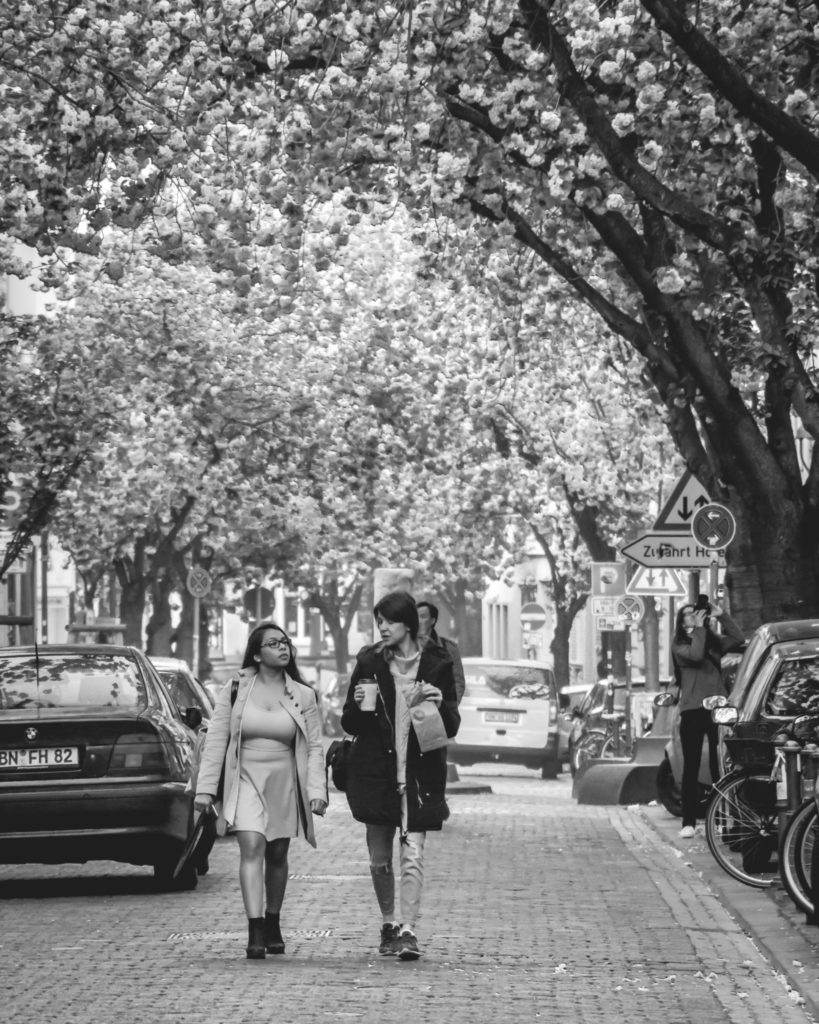
The unknown Instagramer and her photographer.
And in fact, the crowd starts to change while we continue down the street. After the bright daylight has replaced the golden sunrise, the professional photographers disappear one by one; families, groups of friends and photographers with their models fill the air with happy chatter.

We all know what this will look like in Instagram, don’t we! 😉
The occasional car scatters the crowds onto the sidewalks for only a moment. The magic of the pink tree tunnel has us all back in the middle of the road immediately.

“In the cherry blossom’s shade there’s no such thing as a stranger.” Kobayashi Issa
It’s almost 10am now and my phone is about to die. Alexandra and I have walked up and down the pink streets a few times, but now it’s becoming a challenge to avoid getting caught in the different camera lenses pointed everywhere. We return to our car and head back home, leaving the cherry blossoms to the masses that will appear shortly. We will return next year.
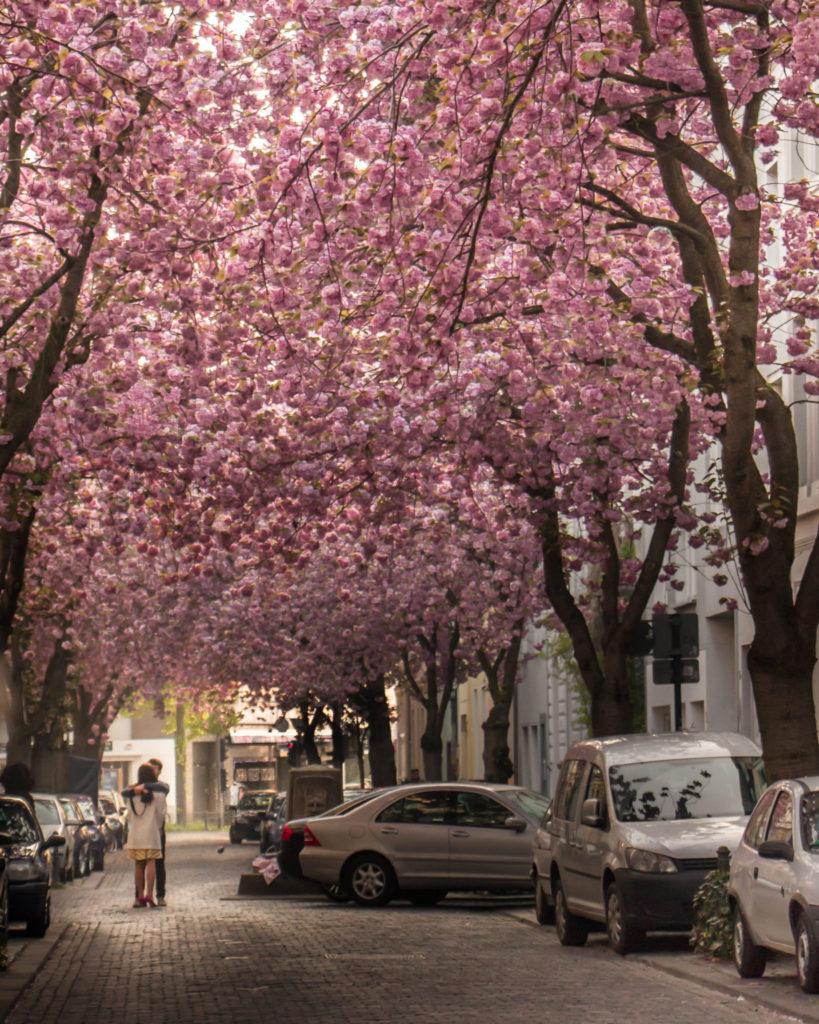
My lucky shot. I didn’t even see them before editing this picture.
“Ah, if in this world there were no such thing as cherry blossoms, perhaps then in springtime our hearts would be at peace”. Ariwara no Narihira
Thank you to my lovely friends Alexandra and Alexandra! @alexandra.loves.cologne for being my photo walk buddy and @whisper_feather for being my editor!
For more cherry blossoms in Bonn visit the IG hashtags #kibo17 and ‘kirschbluetebonn. See you around! @tonivisual

by Grryo Community | May 18, 2017 | Stories, You Are Grryo
An Interview with Photographer Idan Golko: A Self-examined Life
In one of my prior corporate gigs, a division VP said to me, “Mark, you seem to lead a self-examined life.” I was surprised by this. I mean, I took this remark as a compliment, but did I? Did I inspect my life? Did I regularly question my existence by screening my thoughts and actions?

r u capable? © idan golko
Fast-forward to mid-2016. The first time r u capable?—a photographic blog that raises simple questions with complex answers—blipped into my tumblr radar. Flashbacks of when I became more aware of my consciousness (meta-awareness) infused my thoughts. This r u capable? concept is onto something, I thought. I wanted to find out more.
“We must look at the lens through which we see the world, as well as the world we see, and that the lens itself shapes how we interpret the world.” – Stephen R. Covey, The 7 Habits of Highly Effective People: Powerful Lessons in Personal Change
The person behind the r u capable? images and blog is Israel-based photographer Idan Golko. Idan’s brilliant marriage of moody cinematic photographs with thought-piercing enquiries is a meditation on reality. His concept, reminiscent of the Socratic method, illuminates a creative approach to cleaning the lens through which we perceive all things. The lens I’m referring to here is the mind.
“The Socratic method uses questions to examine the values, principles, and beliefs of students.” – Professor Rob Reich, Stanford University
I spoke to Idan on the phone in mid-January 2017. Besides getting to know Idan, I wanted to know the reasoning and symbolism behind his questions. “If I can answer these questions, then I will be a better person,” says Idan. He continues, “then my family will be better. People will be better. The environment will be better and so on.”

r u capable of not feeling alone? © Idan Golko
The Interview
“I find moments of peace and quiet when I take a good shot. “ – Idan Golko
Mark: When did r u capable officially start?
Idan: 2012
Mark: What inspired you to create r u capable?
Idan: A very depressive day. I was in the middle of a big (stressful) project. I wanted to express my feelings and distress in the best way I know–through photographs and words. But before this dreaded day – in fact, several years earlier when I was living in Tel Aviv (in a very urban state of mind) – a friend of mine had asked me if I was capable of intimacy.
Well, this “are you capable?” question had a specific tone and meaning along with a repetitive nature. And, the question stuck with me—it popped up again on that depressive day while I was looking at my photographs. I knew I was doing meaningful things in the world, but I was not doing my thing, and I was asking myself the general question: r u capable? Just like that—black and white, yes or no, and the answer was yes. Three hours later, the blog was on the air.
There is a stronger side in me that chose to live and chose the bright positive path. But that side comes from the dark with a lot of struggle. These two contradictions inside me were a great inspiration as well to create r u capable.

r u capable of taking responsibility over your soul? © idan golko
Mark: You met your wife about three and a half years ago. Was this event the catalyst for your life change?
Idan: Yes. The main change for me was when I stopped expending most of my energy for others. Then I was free to put energy into my projects. My wife gave me courage and strength to make this change and focus on my things in the best way.
Mark: What is the central message you are trying to convey with r u capable?
Idan: To raise the awareness to the possibility of choice through confrontation with your shadows. If you are capable of healing your soul wounds, the impact of that in the world is much more significant than you can imagine.

r u capable? (no i can’t, not today) © idan golko
Mark: What is the philosophy behind r u capable?
Idan: The philosophy behind r u capable is quite simple: to recognize your soul’s defaults, and to sincerely ask yourself if you can deal with these defaults. The questions are simple; I’m not inventing anything. I’m just bringing some thought or emotion to another level of awareness. I want to be a better person to my daughter, my wife, my family and friends, to Earth, and to myself. To recognize our bad defaults is half of the problem, and to solve them is the other half. I’m trying the best I can on both ends of the spectrum. I’m not trying to survive only mentally, but also to be content with my reality.
I have no idols, but I’m inspired by many things and people, such as Ian Brown (Stone Roses fame), Thom Yorke, Nick Drake, Dark 80’s, Monty Python, Serge Gainsbourg, tattoos, drugs, world climate, violence, justice, hope, love, the sea, smell, and so much more.
I feel that in today’s world, everything is “bubbling.” I want the good to win. What is the good? I can’t point one finger at it (there are many), but I do know and feel what is happening in the world today is almost the opposite of good.
Mark: Why photography?
Idan: I find moments of peace and quiet when I take a good shot. The images help me to deal with myself. I find answers in the images I take and I especially find comfort in them. It gives me a short break from all the mass inside me and around me. The photographs I take reflect my mental state. I’m looking outside in order to understand better, to learn more about myself, and to improve – that is, to be a better person (to be more human). I use only secondhand cameras. I never use long zooms

r u capable of healing urself? © idan golko
Mark: Define what a “good” shot is to you.
Idan: A shot that makes me feel something whether it’s the person, the scene, the mood, the light – my heart needs to feel.
Mark: What does it mean to be more human?
Idan: It is easier to start with defining what is not human. Being disconnected with the reality around us is not being human. Often, reality overloads our senses with too much information. We can react to this overload by disconnecting. But, that makes us feel less human. To be more human, we must keep our hearts open and build trust in the mysteries of life. The ultimate goal is to have harmony between the external reality and our internal reality.

r u capable of being patient? © idan golko
Mark: Why only secondhand cameras and no long zooms?
Idan: I love things from the past. Using secondhand cameras, for me, is sustainable. I also like the low-tech aspect of the older digital cameras. I guess I am a bit of a technophobe in this regard. I use a FujiFilm x100 and Sony fF28. These cameras are not old, of course, just secondhand.
Long zooms are a big advertisement that you are taking pictures. I’d rather not be noticed because I want to capture something meaningful that is undisturbed.

r u capable of entering ur dark sides in order to find some light? © idan golko
Mark: What do you “normally” do when you are not taking photographs?
Idan: For many years I found myself doing different things in order to survive financially. I worked many jobs, from being a bartender to a business development director to brewery manager to art dealer and collector’s assistant. When I met my wife, three and a half years ago, I stopped “selling my soul” to others. Since then I’m focusing on my photography and writing and also doing other things, such as dealing with music and cinema memorabilia and secondhand items. I love old stuff, I love the rhythm of the analog.
These days I’m also running a very private documentary project, mostly in video, with a well-known senior actress in Israel. It’s been running for almost a year and it will keep running for another year at least.
I’m also a curating a photography exhibition for an Israeli photographer who died 14 years ago. He was photographing street and portraits in Israel during the late 70s and early 80s. The exhibition is planned for May 2017.
So after almost three years of incubation, I’m finally doing my things.
Mark: Do you have future plans for r u capable? If so, please share.
Idan: Yes. I plan to continue what I’m doing and to expand in many forms of creativity. To find and later on to create other platforms that can serve as a vehicle for r u capable?.

r u capable of looking deep into reality’s eyes and understand that u need to cooperate and not only observe? © idan golko
Conclusion
To sustain his projects, Idan has a few irons in the fire. He is working on a documentary project and he is generating revenue from his photography. Wait, there’s more. Idan also creates a signature product he calls “analog-i” where he takes rare music posters and mounts them with vintage frames that he discovers in flea markets. “I am now back on my feet and beginning to see the flowering from the seeds I planted a while back,” Idan says in gratitude.
Is there a lesson in all of this? Has Idan found the holy grail of what all artists seek – liberation from the chains of stereotype? Idan’s photography has an edge and gladly offers a fresh reprieve from the saturation of trillions of cliché images. More importantly, this edge slices through perception, and it perforates our default mode of thinking – our default definitions of what is beautiful and what is ugly.
If Idan has found all the answers, it’s because the revelations came from within, by pondering a simple question—r u capable?

r u capable of being connected to others as well? © idan golko
Find Idan on:
Website | Tumblr
Hailing from NE Ohio, Mark is a photographer, writer, and consultant based in Bali, Indonesia. Before morphing into a freelancer, Mark slung some code and managed web development teams for Fortune 500 companies. Mark’s favourite meditations are a good book with a cappuccino, feeding stray cats and dogs, and wishing to be a rock star in his next life. He would be very disappointed if you were in Bali and didn’t meet him for a coffee. More of Mark on his
Website.

by Grryo Community | May 11, 2017 | Stories, You Are Grryo
Dubai is rich in history and outstanding architecture. One of my favorite places to visit and to photograph is Al Ras, a small district in Deira near the creek, which means “the cove”. Each time I go to this place, I always discover something new.
A few months ago, I visited Al Ras with a small group of local photographers. “How did you find this place?” a local asked me as we entered a rusty elevator in an old building in Deira. In this building we found an interesting window. The geometric patterns on the concrete wall created the perfect frame for the busy market outside. For most photographers, it’s always a challenge to find new places to photograph and to create something new. “I got lost in the market, that’s how I found this.”


One of the advantages of doing a photo walk with locals is that it’s a lot easier to approach strangers for a photograph. Not that I’m shy, but I usually struggle asking people for a photo. But as the day went by, I got more comfortable taking pictures, while confused onlookers watched me from the opposite side of the street. This was a good day for me to practice portraiture.


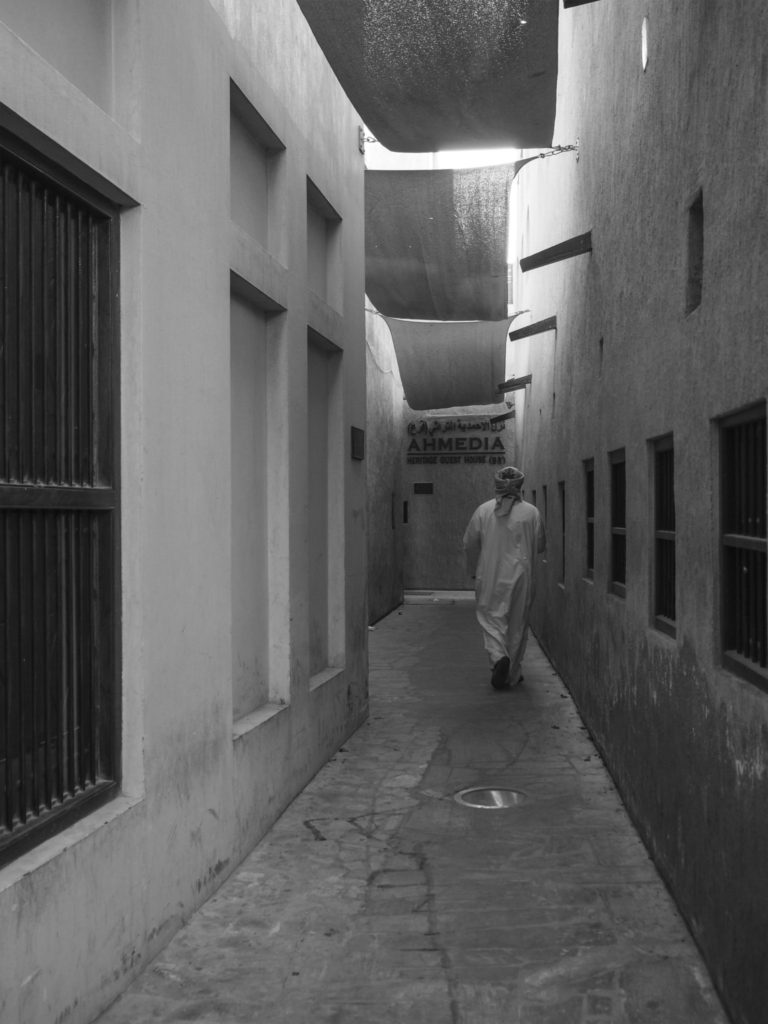
We entered a blue door on a narrow alley and found ourselves in the middle of an old villa converted into small apartments. There we met Ali, a Pakistani worker who happily posed for a few pictures.
The place is also famous for the Deira Covered Souk, where you can buy anything from gold, textiles and spices. One can’t get enough of the incredible number of things that you can find here and the fascinating people you meet in this local market.


In the souk we met a Pakistani guy who sells scarves. At first he was hesitant to do the photo shoot, but after seeing how much his friend was enjoying the photo session, he also joined and allowed us to take his portrait.


We rushed into the old parking building in the souk to catch the sunset. From the rooftop you can see the busy market, the colorful trade boats and the glistening water of Dubai creek. We stayed there for about half an hour and admired the beautiful golden sun disappear behind the light blue horizon. No matter how many times I visit Deira, it will always be a place worth exploring and admiring.

Geny is a Filipino designer and photographer based in Dubai, United Arab Emirates. You can see more of her work on Instagram.

by Grryo Community | May 5, 2017 | Stories, You Are Grryo
I walk to the edge of myself and peer into the great abyss that lives behind me.
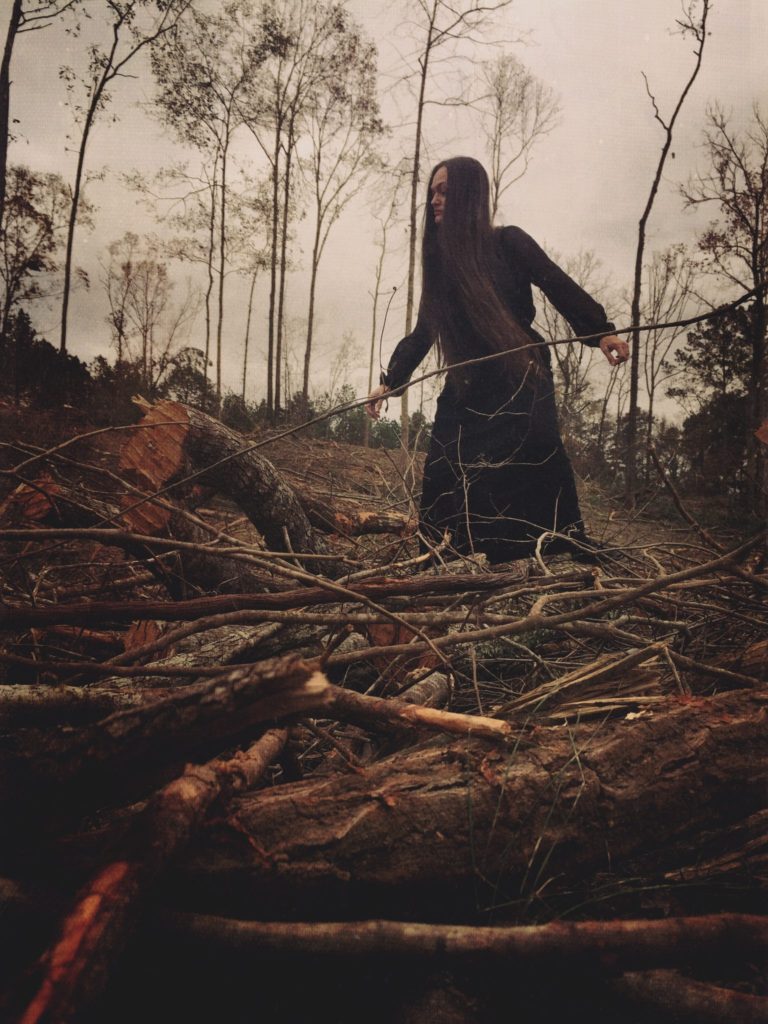
1. A dirty blond-haired girl with eyes the color of raindrops plays a childhood game of hide and seek. Her name is stamped on her forehead – Unbalanced. She has been saddled with it since birth. Unbalanced climbs into a shiny green-and-white Ford parked in the yard, scorched by the noonday sun, and plants herself on the floorboard. It’s her favorite place to hide. Her imaginary friend, whom she has affectionately named Protector, counts in an emphatic voice. ONE Mississippi, TWO Mississippi, THREE… She runs straight for the shiny green-and-white Ford parked in the scorching heat. She knows this routine by heart. Pieces of her friend lay on the floorboard.

Gathering her up, she carries her inside. She’s done this eight hundred and ninety-five times before. Always picking up the pieces of her broken China doll friend and putting them back together again. A day and a half later, they play this game once more. Protector counts while Unbalanced hides. As usual, she heads straight for her familiar hiding place. She is greeted by remnants of bone and flakes of sallow skin on a crimson stained floorboard. She looks straight into the eyes of the discarded matter.

She doesn’t flinch.

2. A coming-of-age girl, with the body of a fading orchid, stands alone in the bathroom – her mouth wired shut. Pieces of barbed wire are wrapped around her head. Mocking voices of laughter barrel their way down the crowded corridored walls made of concrete block and shove open the bathroom door. She doesn’t know these intruders anymore. She turned her back on them long ago.
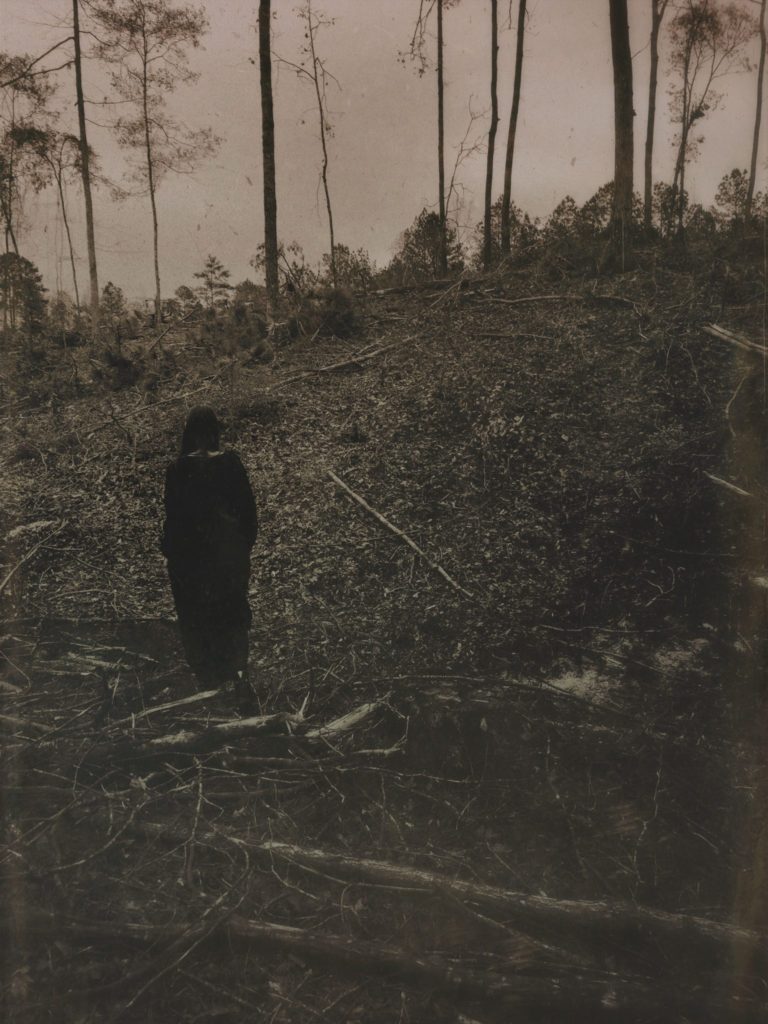
She also abandons Protector.

3. A girl, taking up residence in a woman’s body, finds a new Protector; everyone else calls him by a different name. To him, she is a mystery. To her, he is stability. She loves him like a life raft in stranded deep. He loves her like a buried treasure of rings of gold, so they run away together. She doesn’t know how big dreams can be. He cradles her in his arms as her white satin dress, with the white butterfly appliqué on its train, slides to the floor. They move into a house trailer on Wilderness Trail. Sunshine keeps the clouds at bay. Two years rush by.

4. Then they come in succession:
One
Two
Three
She cries upon their arrival. She’s never felt love like this before. For the first time, she wears the name Protector.

She can barely catch her breath. Lullabies. Late night feedings. Faces flushed with fevers. Giggles. Wide-eyed wonder at some newfound discovery. Bicycle rides and skinned knees bathed in kisses and bandaged with tenderness.
Some days she feels a sliver of herself slowly being shaved away.

5. Thirty looms overhead like a billowing sky of blackened clouds. Old Man Winter seeps into her bones and unpacks his bags, setting up housekeeping. Lullabies and kisses are replaced with deathbed vigils and reassurance from kids wearing old people faces, their wide-eyed wonder slowly robbed of its innocence. She answers to the name Unbalanced once again.

Some days, she summons the courage to stare death in the face. She comes out of hiding. She showers the man, who loves her like buried treasure, with soft kisses. She rides bicycles with the kids behind their house on Maple Street, their sweet, cherub faces returning with rapturous laughter tumbling out of their mouths. They make a soundtrack full of songs like this.

6. She puts pen to paper and writes the story of someone else’s life. Unbalanced names the protagonist Euphoria. Her deep brown eyes perfectly match her long locks of hair that sometimes trail the clear, blue sky. Euphoria plants a Rose of Sharon in her garden. She waters it and watches as it blooms in the shade of flushed cheeks. After spring and summer fade, Euphoria grows tired and lays down on the cool earth blanketed by her locks of long brown hair. With Songbird on her lips, she drifts off to sleep. Unbalanced hides away the unfinished story under her pillow.
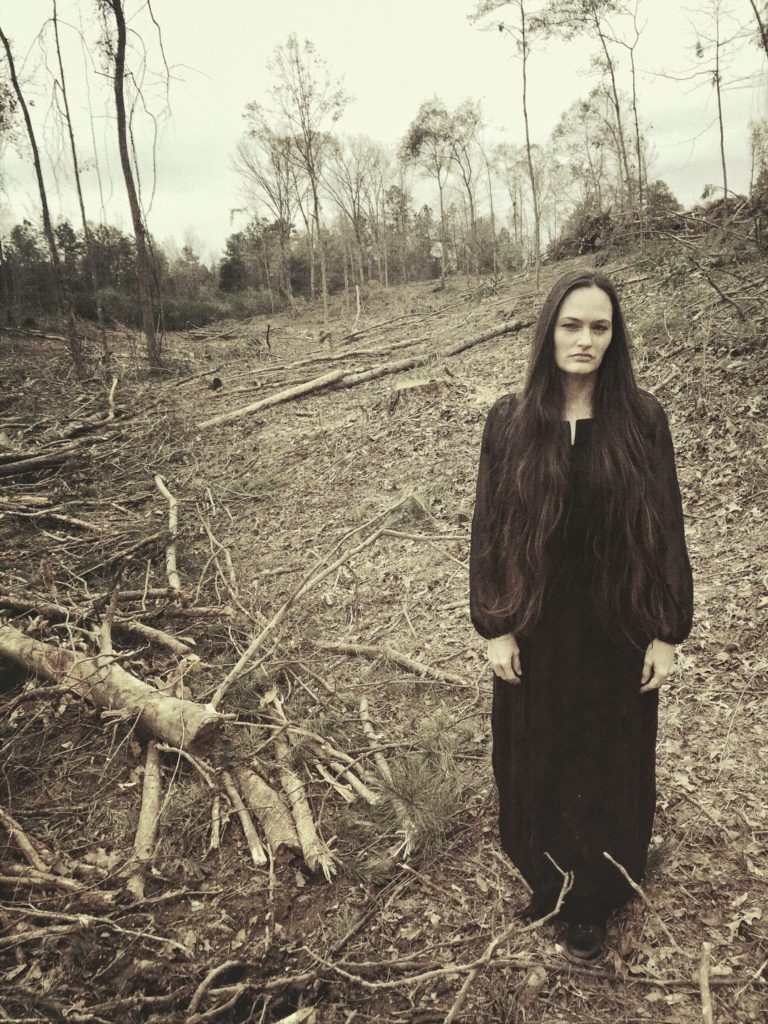
7. For Unbalanced, moods bounce up and down like a basketball. Number Four is born. Her birth brings joy and new life into the house on California. That doesn’t keep Unbalanced from bouncing. Summer, autumn, and winter roll into spring. She goes to bed for two weeks with her lips glued shut. Her mother becomes a surrogate. The man who loves her like a buried treasure drives her to appointments and feeds her prescripted medications.

8. Mostly, she stops bouncing and learns to walk a straight line. Sometimes she gets off track. She develops a deeper love and appreciation for the man who loves her like a buried treasure. Occasionally, she pulls out the soundtrack of bicycle rides and laughter on sweet, cherub faces. They decide to make a new one. Its songs sound just as sweet. She buys a camera and tells stories with her pictures. She pulls out the unfinished novel from under her pillow and lets her words flow from pen to page. She fills in the blanks with dreams that are vast as the heavens and wide as the sea.
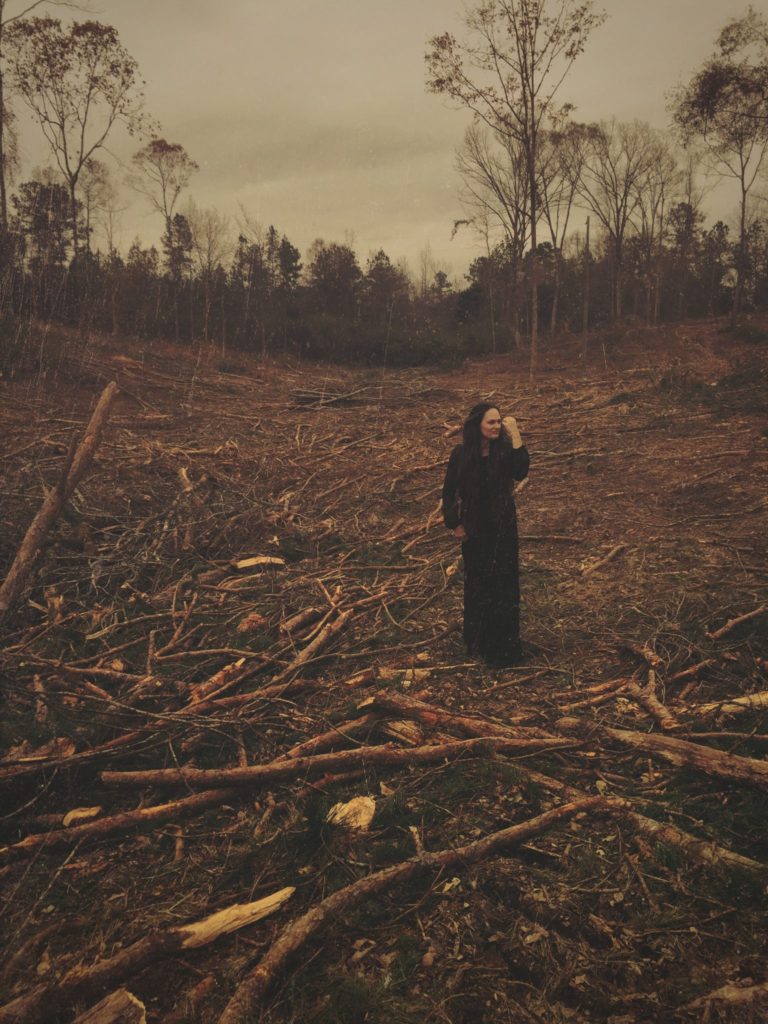
She climbs to the top of the abyss, arms outstretched. I meet her there.
Lisa Acton Smith and her sixteen-year-old daughter, Sophie, share the gift of artistry. Lisa is a photographer and writer, while Sophie is a photographer and musician. They live in Brookhaven, MS.
If interested in learning more, you can find Lisa’s photography on:

by Grryo Community | Apr 27, 2017 | Stories, You Are Grryo

Spring Flowers, 2016 Tampere
Images of Multiple Truth Along the Way
Why do people want to photograph strangers in a public space?
I am a middle-aged father of three children and an art teacher living in Tampere, Finland. I did my master´s degree at the University of Arts and Design in Helsinki (now part of Aalto University) in 1998. Our oldest child moved away from home to study architecture in the autumn 2015. Later that fall, I decided to carry out an idea I had cherished a long time. I bought a micro4/3 camera system, and began systematically shoot on the street. I wanted to refresh the experience of making art, something I lost little by little after uni. Could it be spontaneous, intuitive and surprising still? Could it be part of life outside of my daily work at school? Yes and yes.

Stripes, 2015 Tampere
I have always snapped with my compact camera and earlier with analog SLR. It has been part of family life and travels as usual. One image changed my idea of taking pictures. In Florence at the end of February 2015, while waiting for the order outside of Pizzeria Toto, I turned my camera onto a purple-dressed ”nonna”.

La Viola, 2015 Florence
Purple (”La Viola”) is the city´s symbol color and the nick name of the soccer team. After I took that picture, I had a serious adrenaline peak. I was amazed and confused. Is it okay to do so? The question is valid. My graduation work in the 90´s was a documentary graphic novel based on video material, a story of a man who had lost his girlfriend because of random violence and living on the edge of the society during the economic depression. The project took years, and I got familiar with the questions one has to face in making documentary. But eventually I´ve solved the dilemma of photographing strangers.
I admit, at first the thrill was good enough for me. I fished a lot when I was younger, and I recognized the feeling. The process provided by fishing (as well as by hunting) is similar to the process of street photography. All starts from the equipment and a plan. Then you just have to go out. Senses will awake little by little. The Mind settles, and you´ll live in the moment. There will be a small catch, then maybe bigger. It all depends on the experience, the mind and mrs. Fortuna. And the biggest fish is always waiting somewhere else. You know it for sure. You are patient and walk… finally heading home. At home the catch has to be gutted. Eventually, the fish ends up beautifully prepared and served onto the plate.

The Point of No Return, 2016 Tampere

Conquering Space, 2016 New York
So street photography requires some hunting instinct. People move actively and with interest examining their environment. The Camera comes along in the pocket. Documenting interesting things visually is a direct continuation of the tendency of telling stories, gossiping. Visual narrative applies same laws as stories. Photos must be able to accomodate in Aristotle´s Poetics of a good drama. And like good stories, good images will rise emotions. In a way, we all are telling the same story. The Status, angle and the mood of the story differs. The Grand story deals with us, humans, and our path in this world. The story has always been told, and so it will be in the future too.
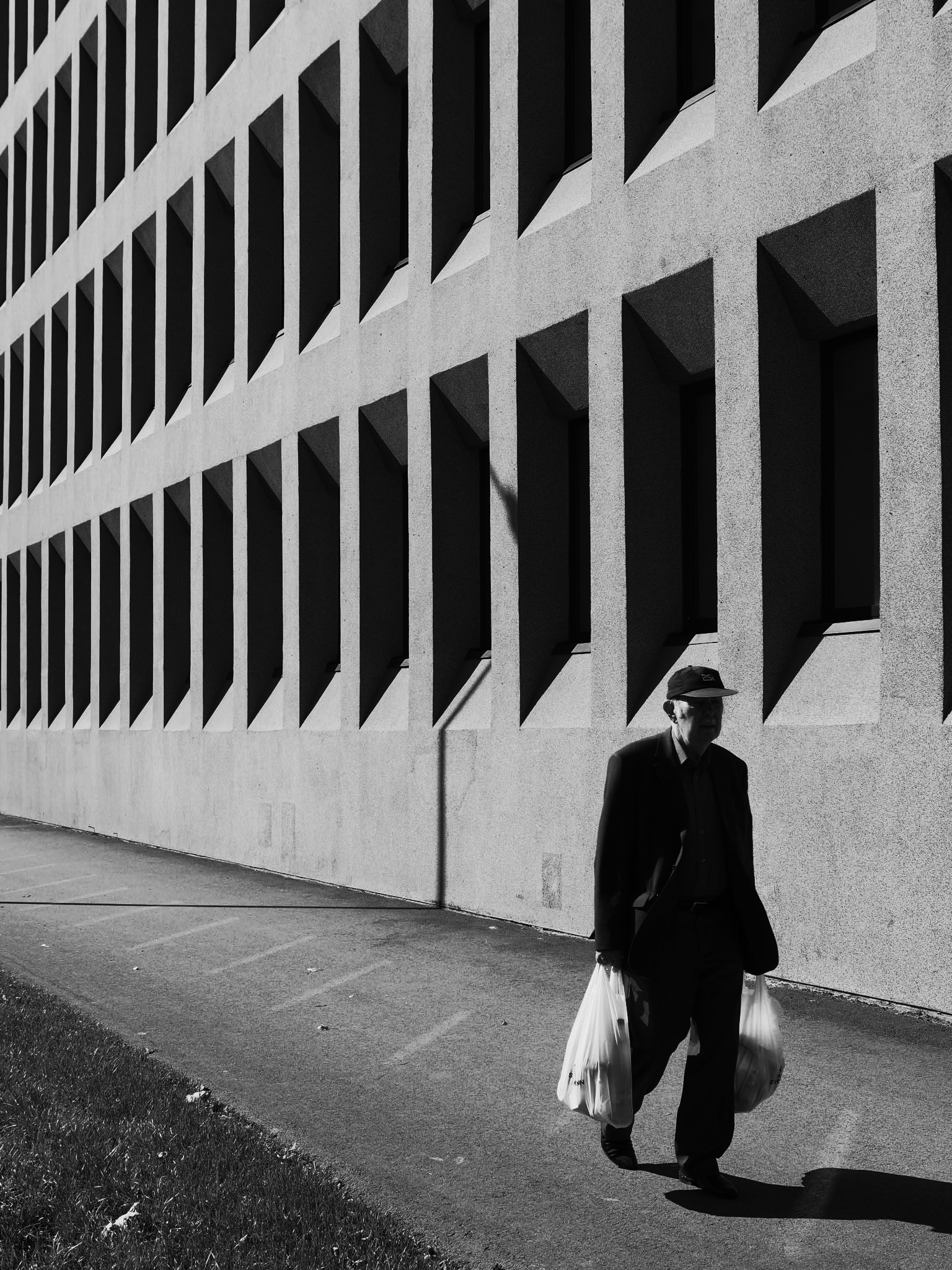
Burden, 2016 Tallinn
We are living curious times. Democracy has been questioned, population growth and the climate change threaten our very existence. Such exceptional times had always had an impact on artists and their work. That is happening now in photography with fierce fury. Visual cultures around the world collide and fertilize each other. New factor groups with a new voices show up. They produce a fresh, new art on its own merits. Techniques, contents and themes will be revised.
However, the sense of standing on a cliff fighting against vertigo is overwhelming, caused by the fear of a global climate disaster . And behind our backs humankind grows. Manipulative authoritarian regimes here and there seize the day trying to repress people under their one truth. All of that effects serious art and photography. Me as well.

Vertical Solitude, 2016 New York
How would I describe last year 2016? Surrealistic? Nightmarish?
I´m offering a non-nationalistic and pluralistic, nordic point of view from Europe and EU too. I’ve always been into both politics and sosiological issues, as a teenager I did my political graffiti in Berlin Wall when it divided the city. A Lot is at stake right now. Here in Finland we have faced the unexpected behavior of our neighbor Russia, refugees from Middle East, the rise of the right wing extremists, Brexit and snowless winters. My visit to the USA in the middle of presidential campaigns was a thorough introduction into the irrational division of the country and segregation based on the system itself. Dark forces are on the move and they are living their life in our common consciousness.
But I dived into the world of Instagram too, and found out the barrier of distance, that earlier separated people, had collapsed. The Concept of ”international” diluted. There is no need for ”Paris” or ”New York” anymore. We all are there, constantly, enjoying the jungle of multiple truth and free voice.

Jazz Singer, 2016 Brooklyn
And my ways to see and do things have changed. Having chance to see such a brilliant photography, occasionally strange and uncomfortable, sometimes just beyond my dreams, have forced me to do things better, more planned, more focused. And I´m assured my case is not an exception. I think all of this can be seen in my images.

Mermaid, 2016 Prague
Image and the process around it has always fascinated me. I imply here specifically
an image in general, not photos particularly. Photography for me is primarily a picture making, using camera as a tool.
How, then, visual arts background is reflected in my images? In street photography it´s common to try to find funny coincidences and interesting visual similarities or gimmicks. Humor is a trade mark of many quality images.

Urban Dream, 2016 Prague
Sure I take a picture if I see a humorous coincidence or scene. But at the same time I feel very drawn to images providing the viewer several possibilities of interpretation.

One + One, 2017 Tampere
The aim is to offer humanity as a whole at a time when the picture is taken. I feel that too specific event or a visual coincidence converts image into a pictogram. A pictogram is a picture that has only one meaning (or one truth, so to speak), such as a coffee cup on a roadside signboard. The best photos can be viewed on forever, and their internal splendor won´t disappear. Of course, the best images can be humorous, and in any case they are always compassionate.
So I´m taking pictures of people, who happens to be along the way.
I feel that my photos are documents of the time I´m living in. My view to the documentary is poetic and interactive. These modes are based on the work of Bill Nichols, who have named six types of documentary films.
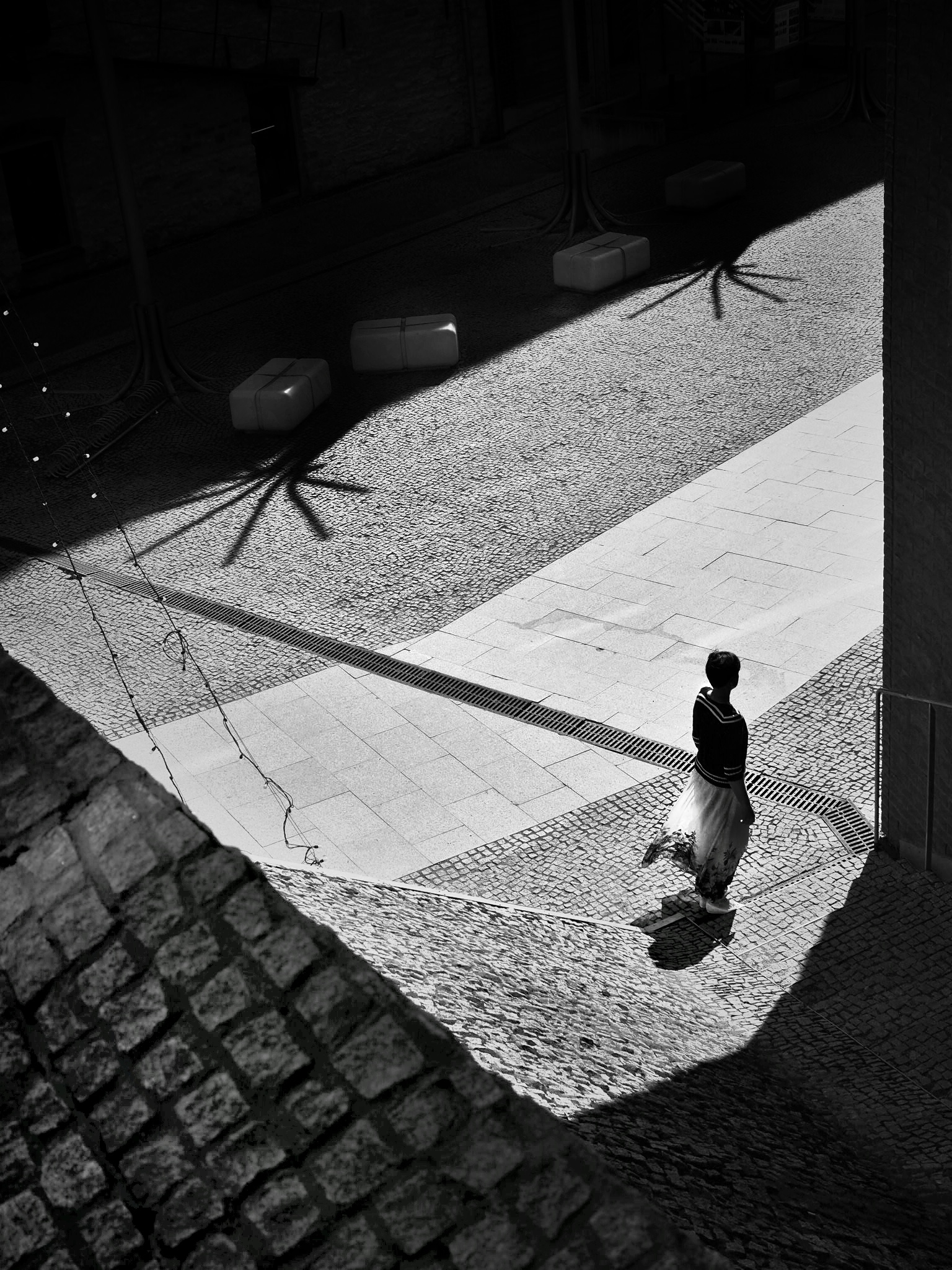
Waiting, 2016 Tallinn
At the heart of poetic documentary mode is to encounter the subject by subjective process, interpreted by author. The author will be recognized from visual aesthetics. Visual aesthetics means here the whole subject, and visual processing. The traditional narrative content does not mean much. People and events do not develop. It´s a question of juxtaposition of time, space and the subject.

Private Space, 2016 Tampere
On the other hand, I feel reflective documentary mode close. For me, it has always been clear that the reality is difficult to talk about. How to take an image, which corresponds to reality. I solved it by creating ”street setups” with a sense of artificiality. It´s a way to lower the sense of truth, to express that the image is a subjective product. It forces the viewer to understand that the image is the result of a some one´s mind set as well as it tells us something about reality. If viewer suspects the authenticity of the picture, I´ve succeeded.
So what do I want to say with my images? This is a question that puts the author in a difficult position. I feel that my images are first and foremost documents of this time and people. My goal is not to present one truth, more like several of them. On the other hand I do not feel just plain aesthetics productive, but important enough to seduce the viewer.
We all are linked to the great story of humanity with communication. It´s a never ending path, and nicer to walk with camera.

Centuries Watching, 2016 Rome

In the Middle of Car Dreams, 2016 Tampere

Survivor, 2017 Tampere

Adapted, 2017 Tampere
Find Jussi on :
Instagram | Twitter | Website

by Grryo Community | Apr 13, 2017 | Stories, You Are Grryo
They plunge to the bottom of the frozen sea, holding their breath, blinded by the murky abyss, searching not only for pearls, octopi or abalone, but also for freedom.
What would happen if their line were to break? Would the men comfortably sitting above in their boats, gleefully singing songs, try to save them? It doesn’t matter. The Japanese Ama defy the ridged confines of gender expectations because they are driven by a unified sense of purpose – to live free.
For the Ama or “women of the sea”, their faith is not in men but in nature. After all, the sea itself is an intoxicating female entity. Its creatures are the Ama’s allies. Their destinies are woven together like a fluid tapestry.
As the divers rise back to the surface and slowly exhale, the bay rings with the whistling echoes of their gentle gasp, and with it, reverberations of strength, autonomy, courage, stamina, and beauty.


The Ama are one of the most interesting elements of Japanese society. They are the female divers who, since about the year 750, have been diving for pearls, abalone, octopi, and lobsters, as well as harvesting seaweed along the coastline of Japan.


There are many fables of the Ama, including the story of Princess Tamatori, depicted in a Japanese block print from 1814 titled The Dream of the Fisherman’s Wife, by Hokusai. It is an example of Japanese erotic art called Shunga, popularized during the Edo Period. The divers were often represented as erotic, simply because in Japanese culture the sea is seen as a female entity.


It is believed that the print depicts the story of Princess Tamatori, a figure highly popularized during the Edo period. The princess was a modest shell diver or Ama, who was searching for a pearl stolen from her husband’s family, the Fujiwara Clan, by Ryujin, the dragon god of the sea. Vowing to find the jewel Tamatori dives down to Ryujin’s underwater palace and is pursued by the god and his army of sea creatures, including octopi. When she finds the pearl, she cuts open her own breast and places the jewel inside; allowing her to swim faster in her escape. After reaching the surface the wound proves fatal, and in her death she is forever viewed a heroine.

The Ama were and still are, women who sought independence and community. There are many Ama who continue to dive passed the age of 90. It is one of the few professions dominated by woman and where there were no restrictions on their freedom.

Men would occasionally dive, but it was thought a better job for women, as it was believed that women had an additional layer of fat to keep them warm in the frigid waters. The original Ama would dive nude wearing just a loincloth and a protective scarf on their head. Streamlining their bodies in this way allowed them to swim faster and it was easier to warm up without wet clothing clinging to their skin.

An experienced Ama diver could dive as deep as 30 meters and hold her breath for up to two minutes at a time. These courageous women would dive from rocks, the shoreline and boats, with rope strung around their waists, and men would wait in the boats above to pull them back to the surface.


The whistling noise that they emit when resurfacing is called “Isobue”, or “ocean whistle,” which helps regulate their breathing. At one time, their whistling echoes would fill the bays of Japan. The entire free-diving process allows Ama to develop an extremely large lung capacity — a characteristic that many then pass on to their children.

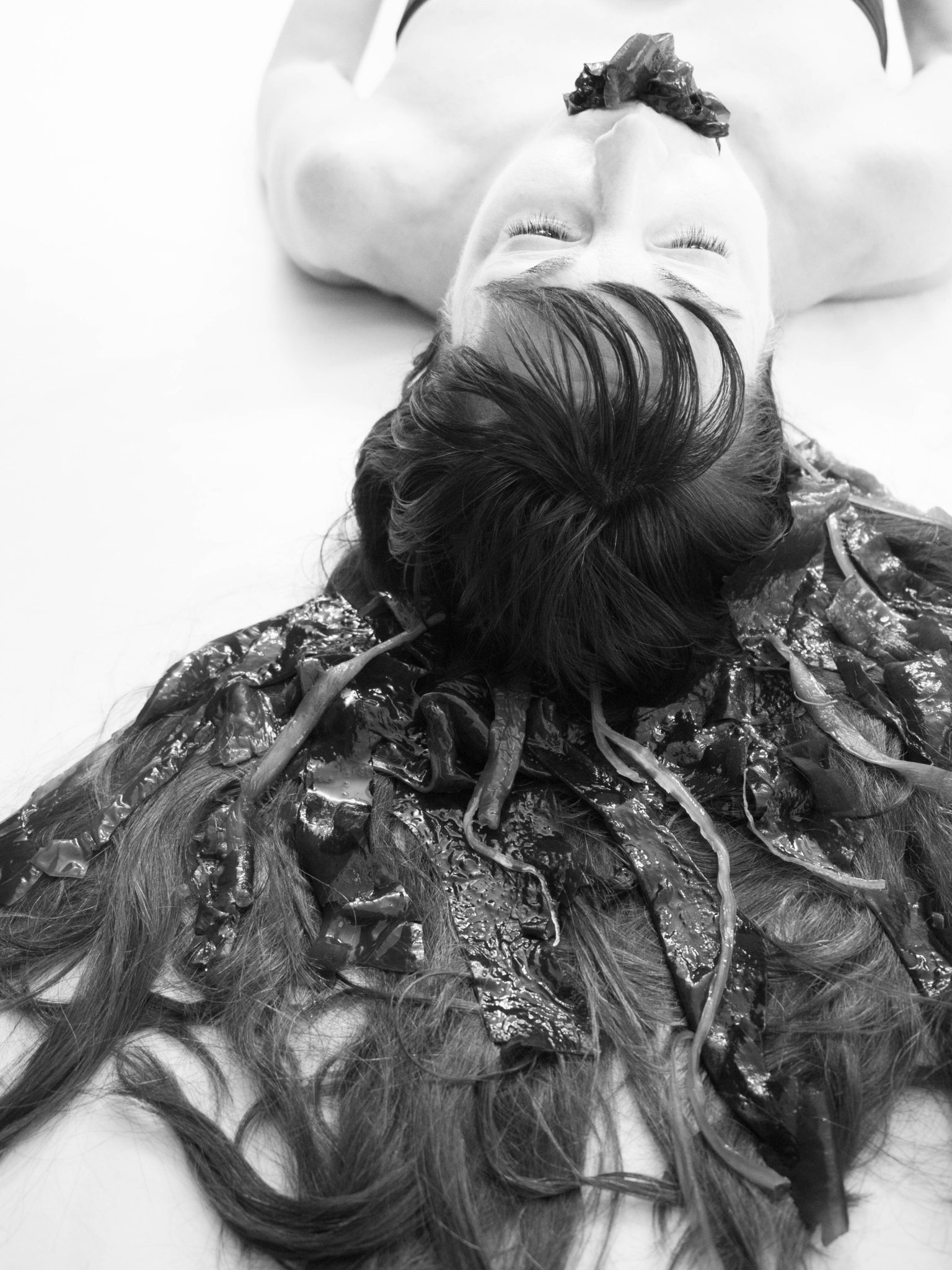
In the 11th Century a noblewomen, Sei Shonagon, wrote The Pillow Book, a collection of her observations. She had encountered the Ama during her travels: “ One wonders what would happen to them if the cord round their waist was to break.” She goes on, “the men sit comfortably in their boats, heartily singing songs…they do not show the slightest concern about the risks the woman is taking”.

Even though socially the Ama’s labor was certainly less valued than that of men, they were unique among the female population. During a time when women were considered the subjects of men, a woman that could earn her own living, and also dictate the migration of her entire family, was unequivocally liberated. Their positions in society existed on almost a surreal plain.
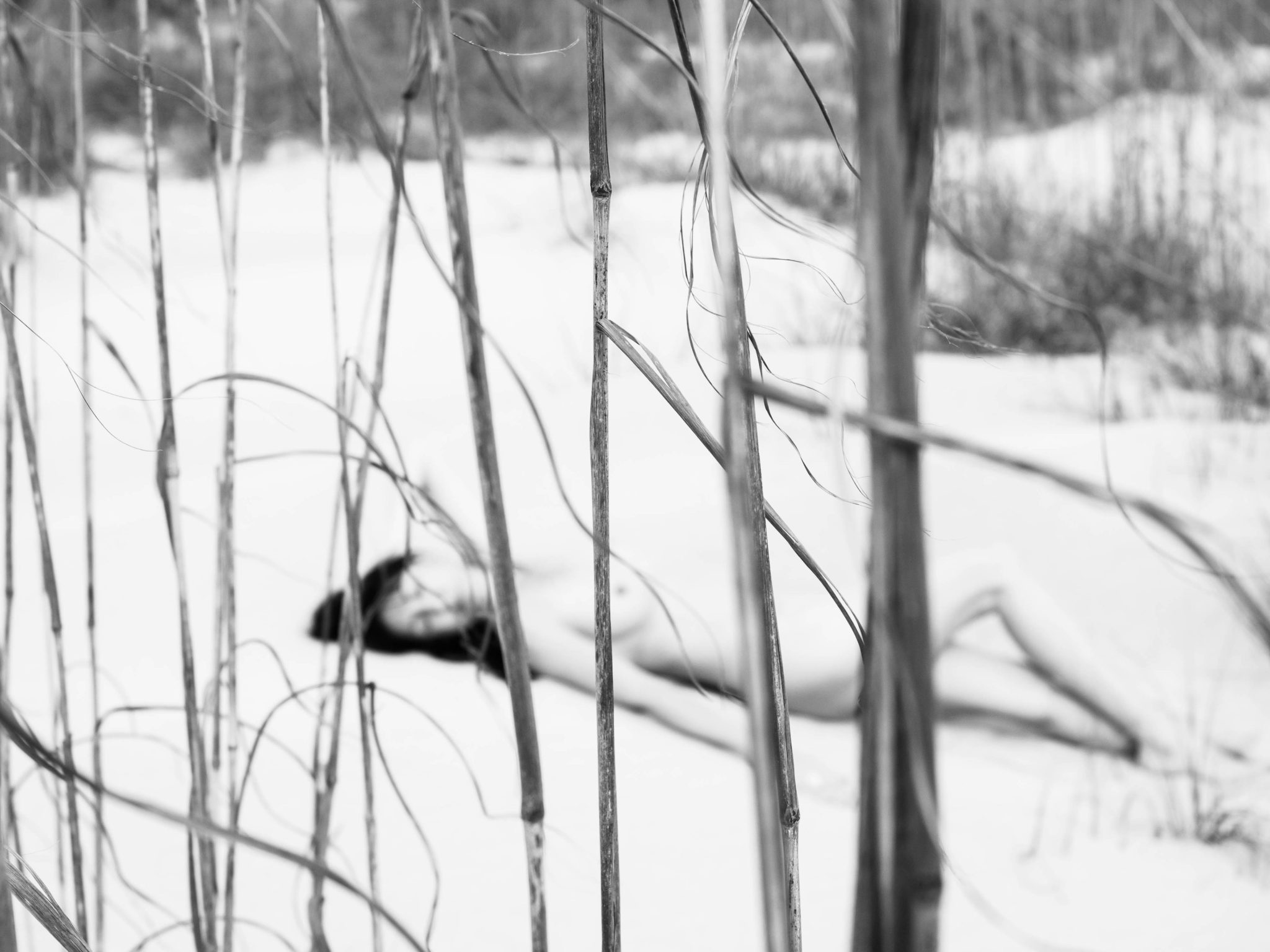
The Ama are inspirational to me, as an artist and a woman, for many reasons, but foremost because what they did was just what they had to do, regardless of risk or reward. Even more remarkable to me is how they did it; breaking traditional rules within the confines of an existing system and still preserving their individual authenticity along with the connection to their culture.

My series, Whistling Echoes, explores the mythology of these women. Through the use of metaphor and symbolism, my visual interpretation explores the relationship that these women had to the sea and it’s creatures and how it not only shaped their destiny but also allowed them to live free.

Donna Garcia is a Fine Art Photographer from the United States.
To see more work and get more information on the artist please have a look at her Website or Instagram.

by Kat Meininger | Mar 22, 2017 | Kat Meininger, Stories, Storyteller, You Are Grryo
I Am My Mother’s Daughter: My Journey in Photography

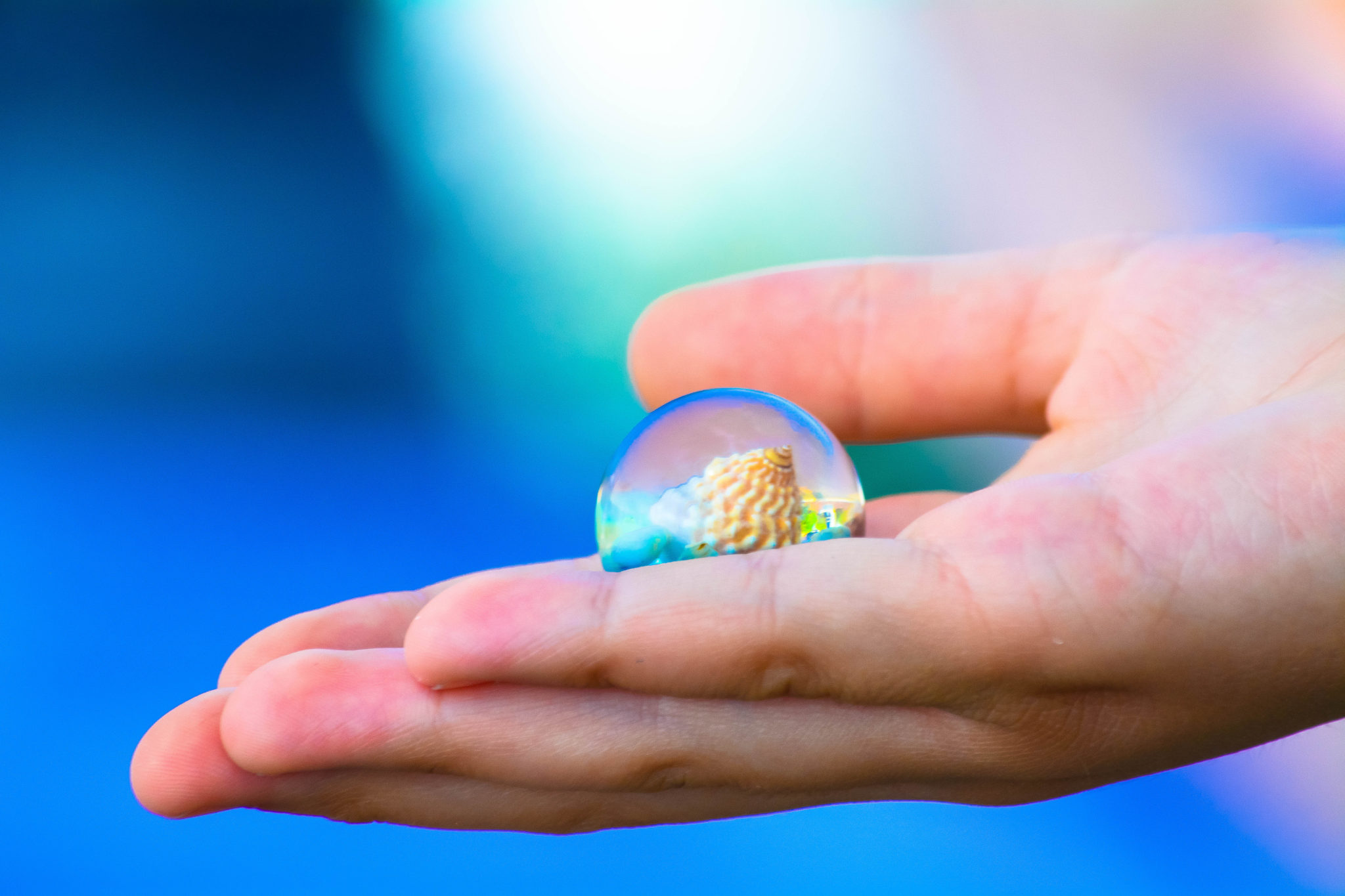
My love affair with photography began with my mother. It was not love at first sight. My mother was always taking pictures. Always. Her camera held permanent residence in her handbag, and our lives were put on instant play-pause whenever she was inspired to take a shot, which was often. As a young child, I never thought about this as her passion, but only as an assigned pose to be endured for as long as it took for her to rummage through her purse to find the camera, get the camera out of its case and then get the shot she was looking for. Full disclosure: I was not in the least bit cooperative. However, I was eventually pulled in by all the photos she took, and I began, not only to appreciate them, but to look at them with a more critical eye. I never offered outright (what I thought of as) constructive criticism of my mother’s photos (an action that would have resulted in any number of unpleasant outcomes…. as a very good-looking and somewhat spoiled woman, my mother was more than a bit vain in all areas of her life).
In my mind, I might have been thinking, she should have turned us more towards the light, or away from the light or taken a few steps forward or backward. My interest was piqued, and for my 8th birthday, my mother bought me a Brownie camera of my own.


Of course, at first, I began shooting any subject that was close at hand: including my hand, my dolls, my clothes, my record player, my dresser, my closet door, dust bunnies under my bed, whatever struck my young fancy. In those pre-digital days, I was allowed two rolls of film and one pack of flash bulbs per month, as the film, flash bulbs, developing and printing all had to be paid for out of pocket. I quickly learned to become more selective in my photographic endeavors as not to waste those important resources on frivolous subjects. Time passed, my cameras became more sophisticated, I took classes, I poured over photography books by the masters and I discovered that photography was as much a passion for me as it had been for my mother.


Fast forward a good number of years, into the digital age of cameras. No longer was I bound by the constraints of finance: I could take as many pictures as my memory card would hold! It was a wonderful thing, very freeing. I could take more photos, more photos than I ever had in my entire life. I could experiment more, the possibilities were endless. The drawback, at least as far as my family may be concerned, is that the circle was unbroken: I had now become my mother, only more so. Someone closed their eyes? Delete and retake! Is the composition a bit off or the light not quite right? Delete, reposition and retake! Sunlight streaming behind everyone through the trees? Take one shot head on, move to the left and shoot another, move to the right and take a shot, shoot low, shoot high; take as many shots as your heart desires. It’s a photo junkie’s dream come true.


Enter the mobile phone with its ability to take photographs using a built-in camera. A mobile phone (or as I prefer to call it, my camera phone) that can be taken wherever I roam. This little bit of wizardry (or little bit of heaven) is nothing if not easily portable. This has opened up a whole new world, negating the need to have an unwieldy camera hanging from my neck or a heavy backpack full of lenses and equipment slung over my shoulder unless I choose to go shooting pics old school. Taking photos no longer needs to be a delicate balancing act. As I did when I first began, I can simply point my camera phone and shoot. And, as my mother before me, I now carry my camera in my purse (or in a pinch, in my pocket.)



It might have ended here if not for all those glorious photo apps. I could go on for days, but prefer to focus on my favorite camera app, Hipstamatic. I discovered mobile photography and the Hipstamatic app within months of each other in early 2012. Left reeling from the deaths of my father, my father-in-law and my mother within a three month period in late 2011, I desperately needed an all-consuming distraction. My first iPhone (4S) and the Hipstamatic app fit that bill to a “T.” I believe I was drawn to Hipstamatic because it’s a neat little app designed to recreate photos produced by the so-called toy cameras of the 50s, 60s and 70s. It’s so much more than that, because along with numerous combinations of lens, film and flash filters, there is a full editing suite, which taps into my creative side. I can play with its features in so many more ways than I could with the actual toy cameras I once owned.

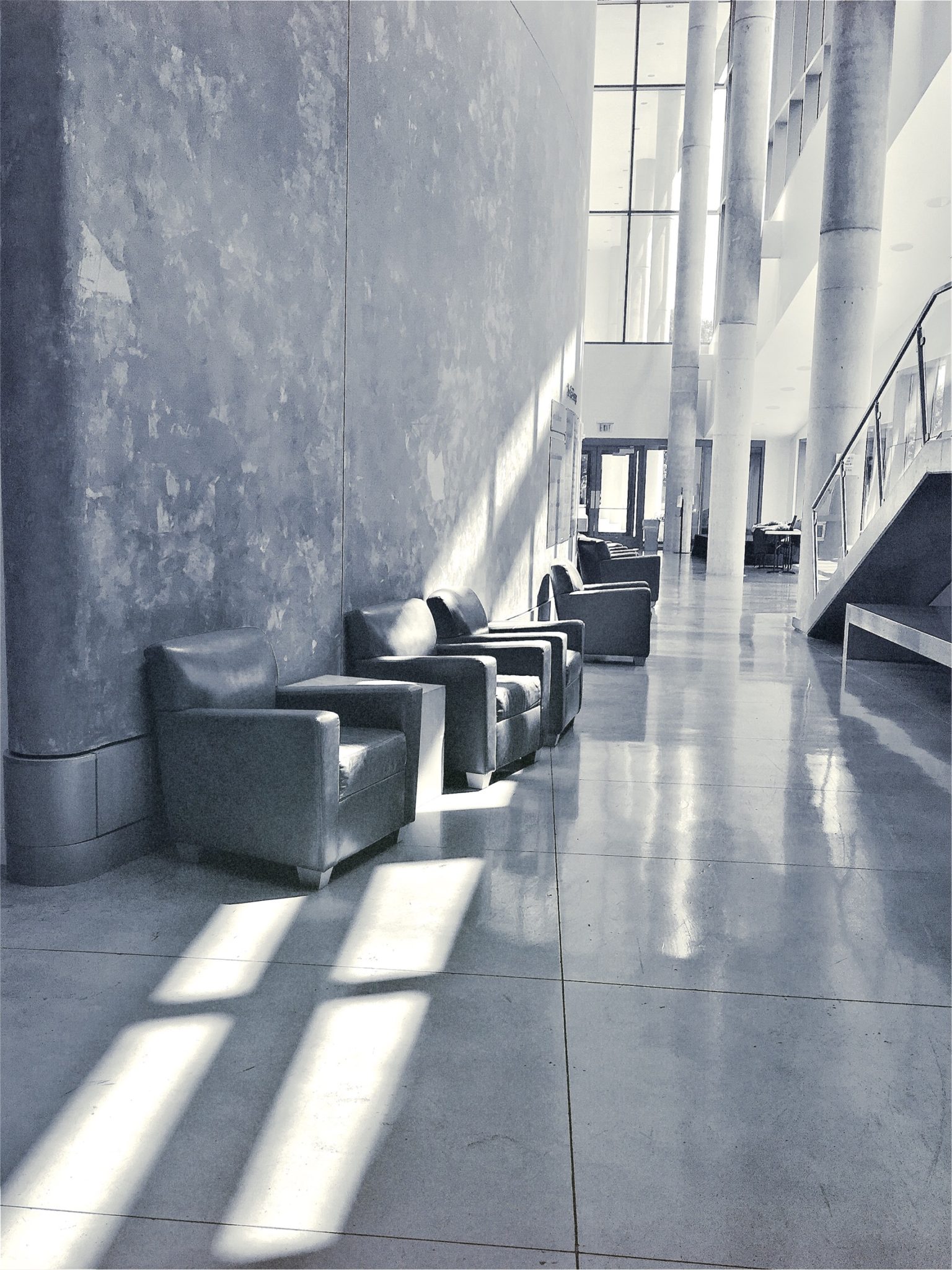

Now that I am retired, I am free to wander the countryside, happily snapping away to my heart’s content. The child who wanted to shoot photos of every conceivable subject has been redeemed. There’s a big, beautiful world out there, just waiting to have its picture taken. I take enormous pleasure in snapping shots of a favorite tree or bridge in the different light of day, in different seasons. Every hour of every day presents a new photo opportunity. It’s a new view of an old friend with every click of the shutter. Ironically, I cannot stop taking pictures of my children and my grandchildren. I am in constant stealth mode, camera phone in hand, hunting for the perfect candid moment. My mother would have gotten a big kick out of this.
Kat Meininger can be found on Instagram: mobile photography as @kats_eye_phone & DSLR photography as @kats_eye_images ; as the founder of @hipsta_crazy & Admin of @photomafia group of photo sharing galleries.

by Jeffrey Coolidge | Mar 14, 2017 | Jeffrey Coolidge, Stories, You Are Grryo
“Here Today Gone Tomorrow – The delicate balance of sand, water and life.”
I have been drawn to a thin spit of sand and scrub pine for the past 20 years. The landscape is shaped and re-shaped by storm after storm. Sand dunes, sculpted by the wind and sea, slowly shift, creating an ever-changing mural. The quality of light is otherworldly. Sand, water and weather are the key – high and low pressure fronts change so quickly light becomes ephemera.
The Cape Cod National Seashore comprises a majority of the landmass on the Outer Cape. It is shaped by vast stretches of dunes, bogs, ponds, forests and beaches – all accessible to anyone willing to hike in. The delicate balance of sand and water is a tug of war between the land and the sea. It is a powerful, yet fleetingly beautiful place.


My wife, Ellie, is an impressionist painter. She is a student of the Cape Cod School of Art, established by Charles Webster Hawthorne in Provincetown, Massachusetts in 1898. We spend our time together in the dunes and beaches of Wellfleet, Truro and Provincetown. We hike in and find a spot. Ellie sets up her easel, spending hours on one painting. As she works, I wander, studying the landscape. This change of pace has taught me to slow down, be patient, have faith in my composition and wait for the light. More often than not, the storm clouds persist, the light stays flat and nondescript. But on occasion, one is given the gift of a moment, the clouds break and the landscape erupts in beauty.
I visit these haunts ritually, photographing and re-photographing the landscape. It is a form of meditation, a cathartic experience where the quality of the light transforms the familiar to the unreal.
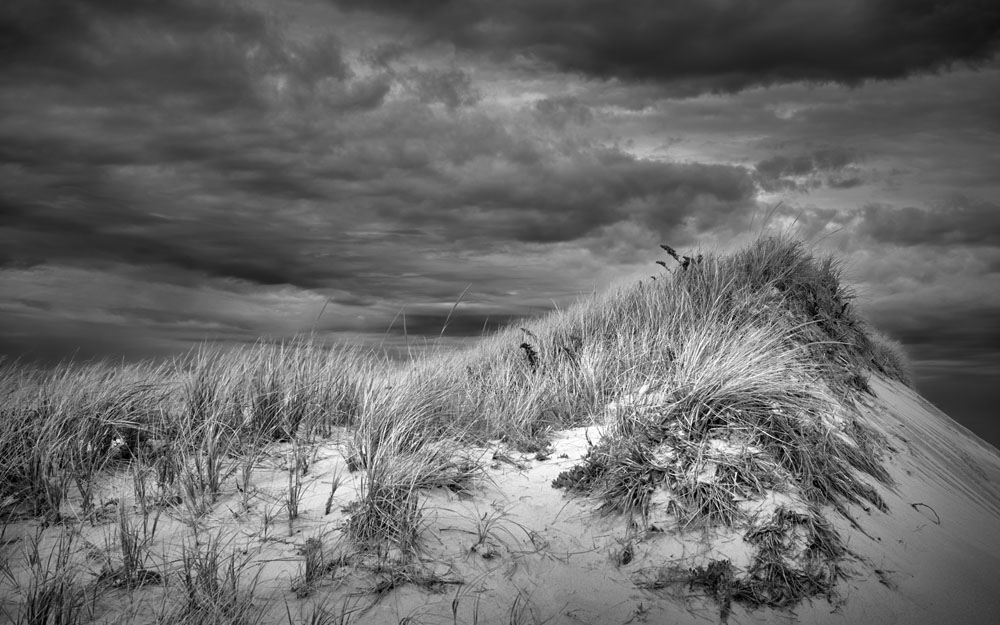

As vulnerable as this habitat is, it pushes back against human attempts to protect it. Snow fences, erected to slow the movement of sand and inevitable erosion, are buried and crushed by the constant flow of wind and water.
Concrete piers and stone breakwaters are eventually broken by the tides, washed out to sea or left upended, a relic from the past. These crumbled and submerged forms are a testament to the natural powers that ravage the land.


The forces of nature are hard in the dunes. Flora is stunted and twisted, a wonderful contrast against the windswept sand. Competition between species, the perpetual fight for patches of fertile soil, creates a visual pallet of color and form. Natural boundaries between salt water species and fresh water species forge delineated lines that crash into a swirling patchwork of hue and texture.


It comes down to water. Frozen water formed the Cape. Glaciers deposited their till, forming the landmass. Water grinds the rock to sand. And water will eventually reclaim this thin spit of land, sucking it back into a dark and hidden tomb. One could say, what the water gives the water will take.
But for today, it’s the water that charges the light, opens the shadows, pushes the weather and gives the gift of this mystical place.


Thank you for taking the time to read and look at my photographs.
To see more of my photos, please visit me on: Instagram | Website.

by George Pavlopoulos | Mar 7, 2017 | George Pavlopoulus, Stories, Storyteller, You Are Grryo
I grew up next to the sea and I felt that I had everything: an endless summer, the song of the cicadas, a bunch of faces that refused to grow old and the taste of watermelon under the pine trees. The sea resembled an uncultivated field, where childhood was constantly being reborn and rewarded. I don’t remember all the faces I met, but I do somehow recall sudden expressions and fleeting images: the talk of older people before sunset, the whispering lips of women, the sweating foreheads of busy men, the agony for the coming winter, as well as the promise that a triumphant summer will conquer our lives again.

Then I lost the sea and the transition was violent. Entering the next phase of life kept me occupied but I could hardly somehow manage to return back to the early days. I wasn’t nostalgic or pessimistic; I was just longing for some sort of simplicity, a way of life based on spontaneity, on free will and on outspoken truths. Adulthood did not arrive as a blessing but as the fulfillment of a dreary prophecy. All the potential punishments of our childhood became our daily adult routine: “you’ll be left alone” or “you won’t get any money” or even “you are not allowed to go out”.
The legendary summers looked like shipwrecked boats; they couldn’t set sail because they were too damaged, nor could they reach the shore and start all over again clean. I equipped myself with artifacts, some long existing objects, humble in their existence, easy in their use. Technology has altered them but it didn’t taint their soul. They seemed to have been always there, on that remote planet, as a way of expression and their purpose was to create worlds that we’d probably never visit.

“Yellow Balloon”, Athens 2016
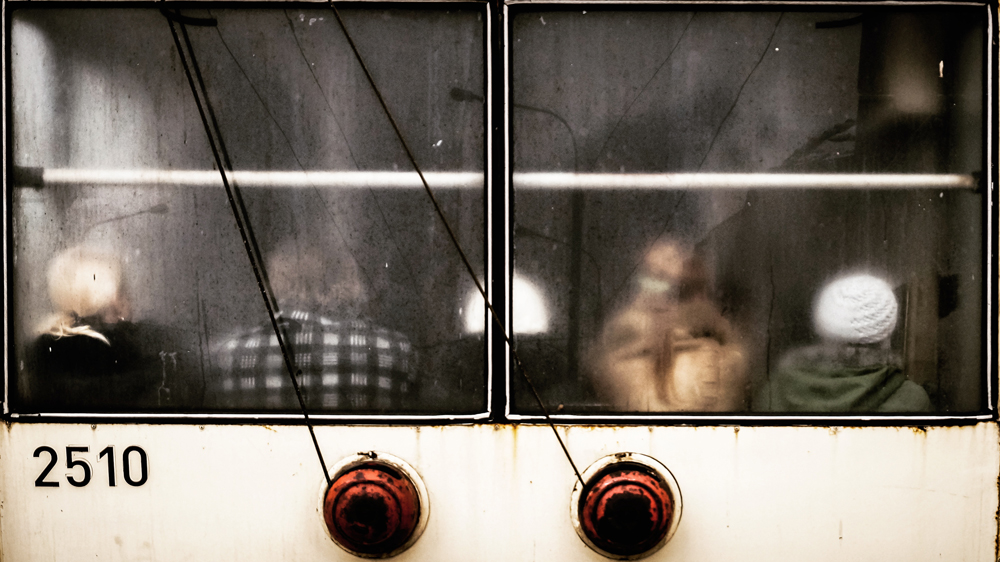
A family of sorts, Vilnius 2016
At first it was a pen and a paper, then a typewriter and later a laptop. Despite its technological evolution, the soul of the written word did not change and there will always be someone willing to lock his body -but not his spirit- into a silent room and start writing. Respectively, at first there was a smartphone, then a compact camera and later a bigger one. Contrary to the ancient belief, images do not consist of a thousand words; they consist of all the words we were not able to write.

“Wrinkles and movies”, Bologna 2016
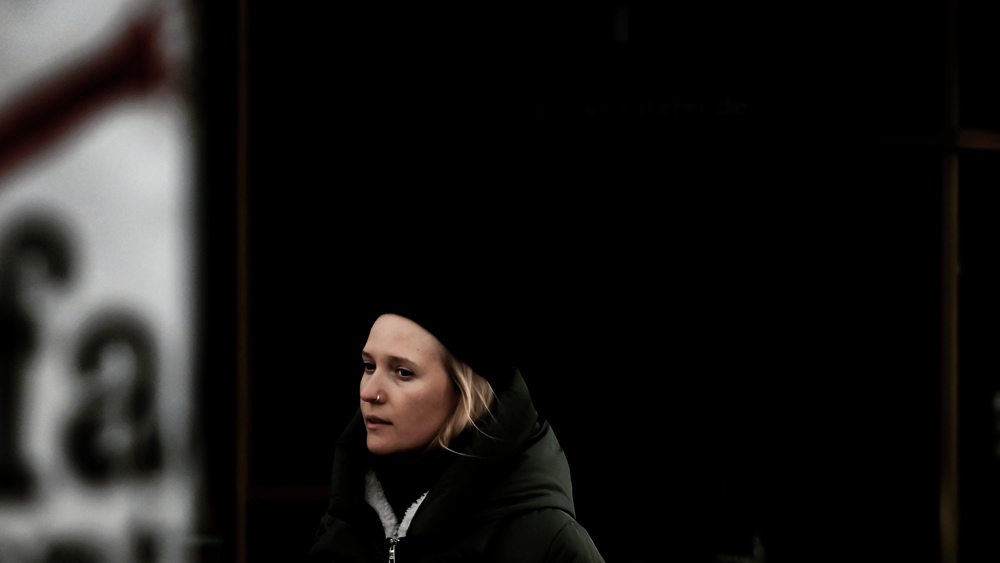
“Far Away”, Berlin 2017
I can never afford to lose people, but when I started dealing with absence it seemed to me that there was only one way back: the narrative. Through writing I felt I could re-visit, through photography I felt I could re-see. The return to childhood has nothing heroic in its heart and I could never identify with Proustian moments. It was simply that old longing for simplicity sending me to the white paper or the black film.
The white paper and the black film are always an interpretation of a narrative that fails to be resonated: words that fail to be written deliver always a white paper, while photos that fail to be taken deliver always a black image. The eternal battle of the two irreconcilable colors is not only a clash between light and darkness but also the inability of self-expression on a given day. If the creative adult is indeed a child who has survived, one can only imagine how painful a white paper or a black film really feels.

“No man’s land”, Berlin 2017

“The Letter”, Athens 2017
I can’t recall most of the faces of these old summers. They seem to be lost in a sea of oblivion and they are only allowed to emerge for an instant every now and then. Nowadays I spend less time in front of the sea and I am not that spontaneous anymore. I’m spending most of my days in big cities, where History adds an extra weight on the already long faces of the Europeans. Sunny days are good for the body, but only the cloudy ones make me feel really productive. I’d wake up rather early and I’d write until noon; then, I’d take my camera in hand and go out.
The city is crowded and I’m searching for dark corners, spots where the contrasts are magnified. I’m standing there for twenty, maybe thirty minutes. I’m waiting for a face to appear from the darkness, somebody that will remind me of the people I used to know: faces from past summers, lost loves, absent friends, people I rarely see. Some days no one appears, but I live for the day that a familiar face will emerge from the darkness. This is a re-connection of sorts, a short return to the simplicity of childhood: a person, an expression, a scene. The memory is finally serving its purpose, which is to remind us who we really are: we are nothing more than a patchwork of all the people we ever met. For a dense moment I feel like being in front of the sea on a warm summer afternoon. I am extremely young again, I am revolted against oblivion and I’m fishing in the abyss.
THE END
George Pavlopoulos is the author of three novels. He has also written several travelogues and short stories. You can see more of his work on his Website as well as on Instagram.

“Only the inventors survive”, Athens 2016
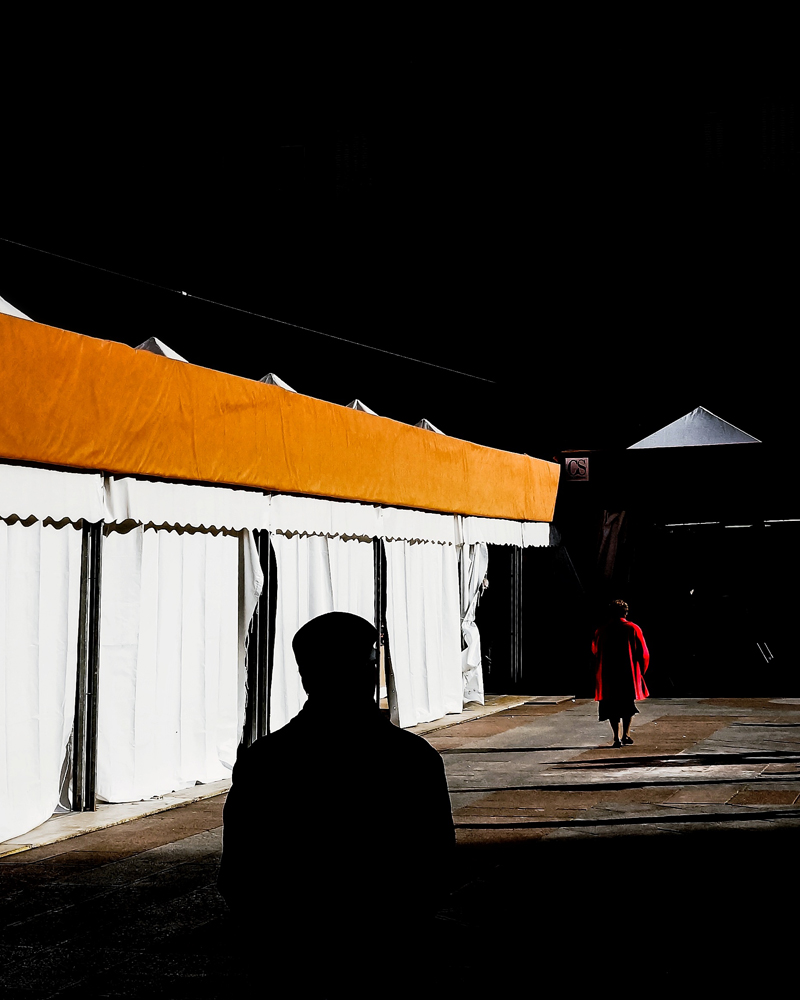
“The journey of sand”, Bologna 2016

“The man who could not dream”, Berlin 2017

Kings in water, Budapest 2015

“Ghosts”, Athens 2016
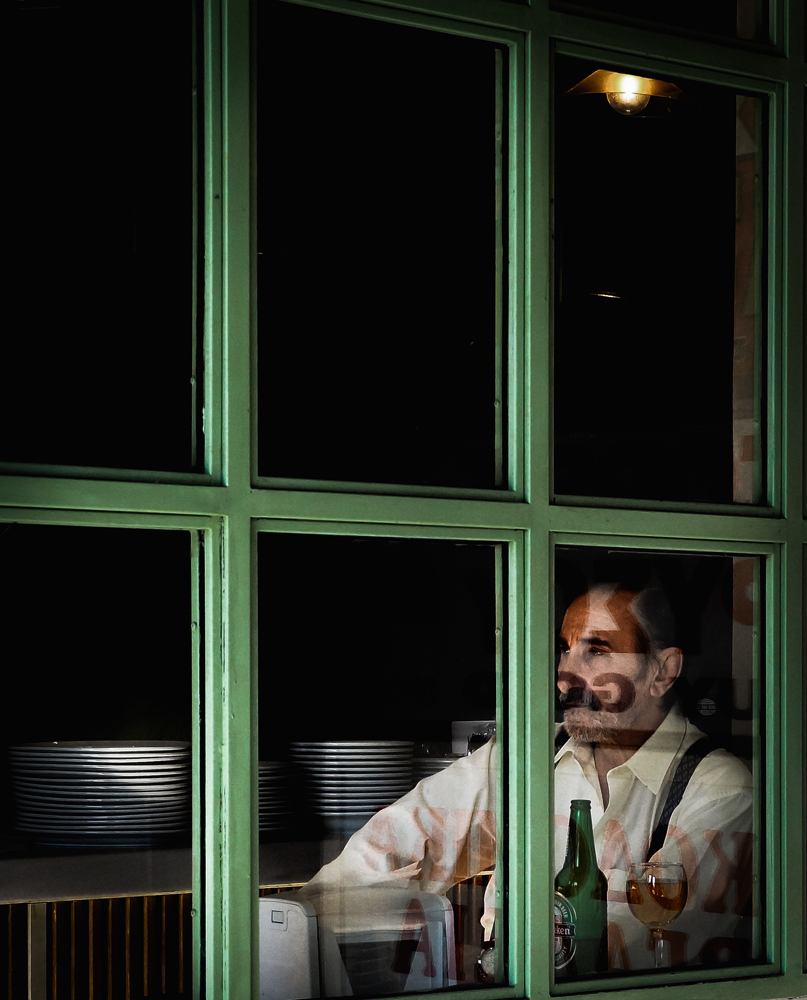
“Early summer”, Athens 2016

“Christmas”, Berlin 2016

Towards the future, Berlin 2017
































































































































































